
The Coolest Things Ever Found Buried In Ice
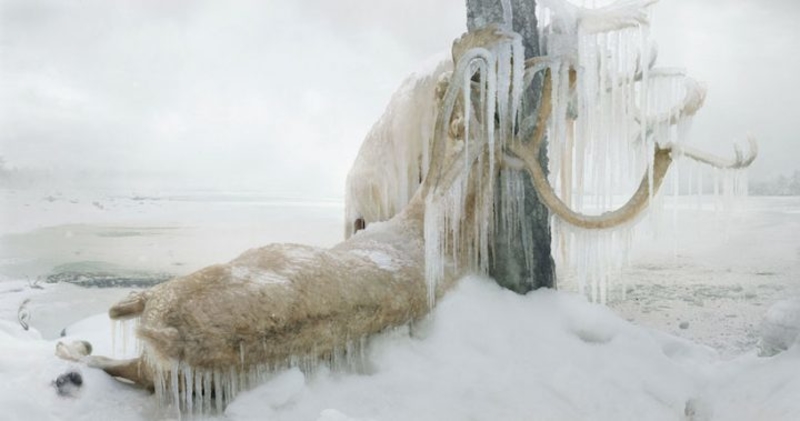
Everything from furry animals to entire buildings have been found in icy frames around the world. Let’s take a look at some of the craziest things that scientists have found in the ice!
The Real Encino Man
If you’ve never seen Encino Man, it’s a goofball comedy about a caveman, played by Brendan Fraser, that was discovered in the ice by a couple of teenagers. As silly as the movie might be, it’s actually based on truth. Of course, the real body that was found didn’t come back to life, but it was found in a block of ice.
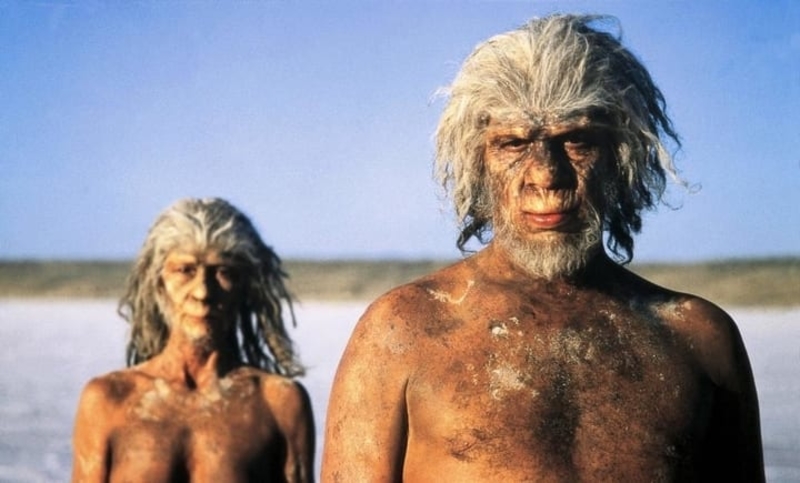
The body was discovered in Canada in 1999, and scientists dated the corpse to be between 300-600 years old. Aside from the well-preserved body, the hunters that discovered him also found his walking stick and a fur coat. What’s interesting about this case, is that through DNA testing, they were able to find over 15 living relatives of the man in the ice, who had simply been dubbed “Canadian Ice Man.”
Kermit on Ice
It’s amazing that frogs could survive in arctic and sub-arctic areas, even in the summertime, as you’d think they wouldn’t even be found anywhere within the vicinity. However, they apparently do, as this little guy was found frozen on top of a pond in Canada. He must have become trapped when temperatures dropped rather suddenly, leaving him stranded on the freezing surface.
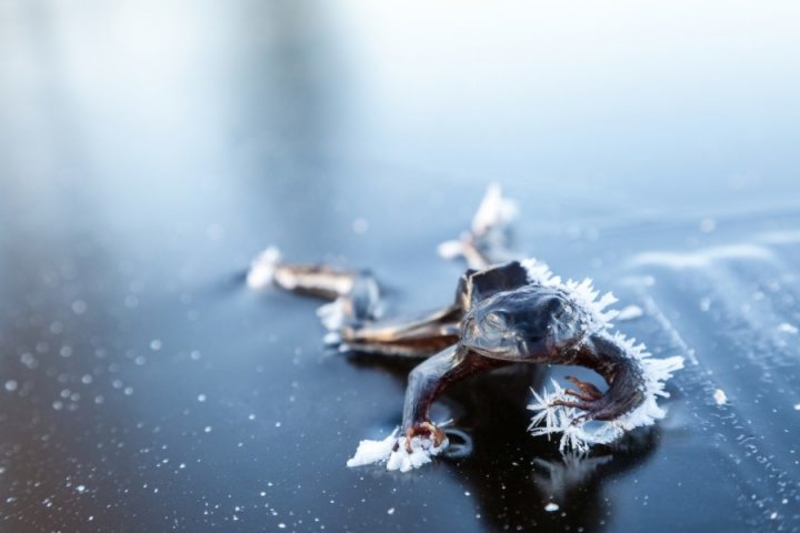
Interestingly, some frogs are able to survive in freezing cold temperatures – as long as they are able to dig down deep enough that the surface temperature won’t kill them, as was the case with this unfortunate amphibian. In North America, there are currently 5 known species of frogs that are able to live through extremely cold winters, but this one obviously wasn’t one of them.
Original Bacteria
Bacteria, like animals, grows and evolves, and it can actually evolve much, much faster. It’s possible for bacteria to evolve to a completely new type of itself within a matter of days. So, scientists probably had a field day when they discovered bacteria specimens in some of the oldest ice that’s known to exist on Earth. They dated the samples all the way back to 8 million years ago. That’s way older than anything else we’ve come across so far!

Unfortunately, for bacteria to survive in an arctic climate like that for so long, it means it’s the type that’s able to spore, which acts like a hibernation mechanism for the unicellular organisms. Scientists now have those samples in a lab, in which they are trying to grow it again. But don’t worry, even if it means ancient diseases will come back, they aren’t likely to affect modern-day humans very much.
The Prehistoric Moose
This poor European Elk, also known as a moose, ran into some seriously troubled (and frigid) waters. The animal was found underneath a frozen lake in Alaska, by a pedestrian who was out for a leisurely skate. Scientists believe that the animal tried to cross the lake and fell in. Since the moose had nothing underneath him (or her) to kick off of, it either froze or drowned to death.
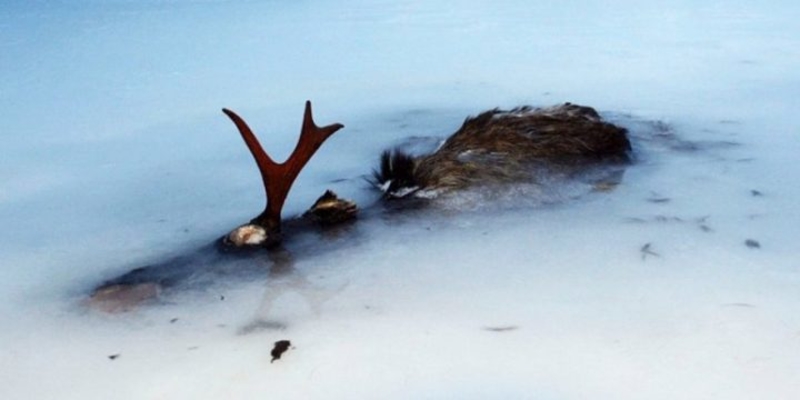
All jokes aside, this frozen beast revealed a lot to scientists. Among these things is an understanding of ancient creatures. First off, it shows that these ice-age beasts were similar in phenotype to a few of the animals that live today. This is because it has fur and antlers—and ostensibly for the same reasons that modern-day mosses do.
Entire Forests
When people talk about the “inner Earth” conspiracy theory, they may be referring to an underground civilization living somewhere within…well, the crust of the Earth, or something like that. But in reality, there are actually entire ecosystems underneath the surface of the planet as we know it. Enter Mendenhall Glacier, in Alaska – one of many others of its kind.
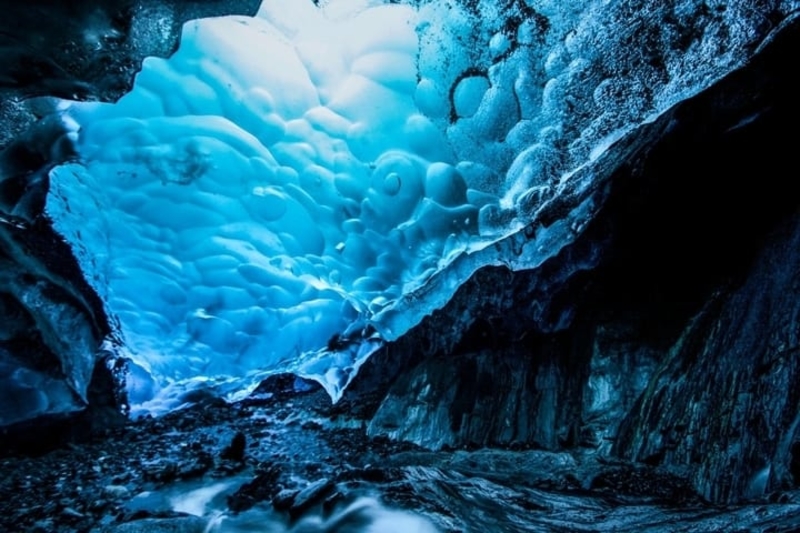
You see, a glacier actually has the ability to swallow forests and spit them back out again when the ice starts to melt. This effect has come to be known as “moraine,” and is actually more common than you may think. So, in some areas, such as Juneau, scientists are beginning to notice more and more tree tops being uncovered from underneath the ice. And yes, (most of) the trees are being found still standing up.
Mammoths
The remains of the ancestors of modern elephants, woolly mammoths, have been discovered all over the world, from Alaska to Siberia. These gentle giants had tusks that could reach up to 15-feet in length and could weigh up to 15 tons, although they weren’t necessarily the largest species of mammoths. Remains of these creatures have been dated back between 39 and 40,000 years ago.
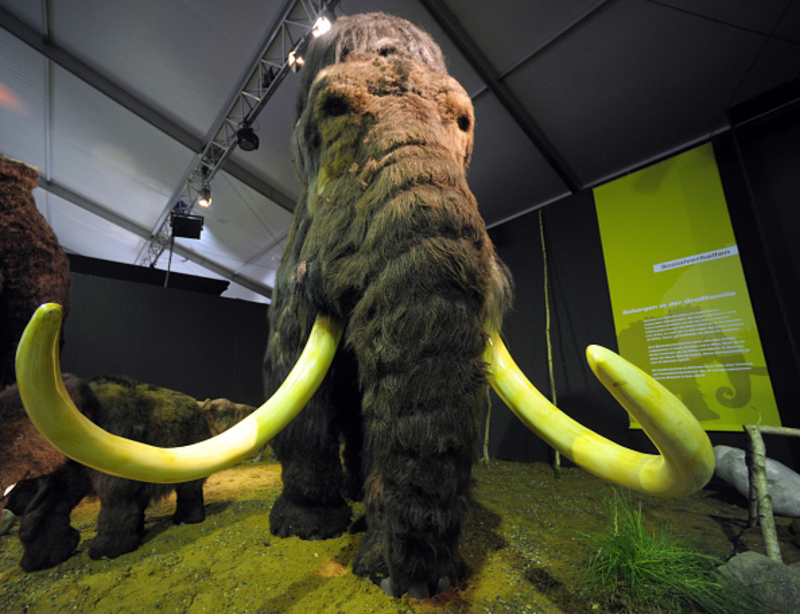
In 2013, researchers discovered perhaps the most well-preserved woolly mammoth to date, deep in Siberia in a tomb of ice. They believe that the female mammoth had lived nearly 40,000 years ago. The body was still so intact that it still had some blood. Scientists are working on a way to implant some of the DNA from the mammoth into a modern-day elephant, to create a new hybrid species.
More Bacteria
With all of the permafrost around the world melting as temperatures rise, it shouldn’t come as a huge surprise that scientists have unearthed more than one ancient type of bacteria. Since 2003 alone, they’ve actually discovered three types in three separate places, including the discovery of carnobacterium pleistocenium, in 2005. NASA pulled the samples from a lake that had frozen over in Alaska, and estimated they were over 30,000 years old.
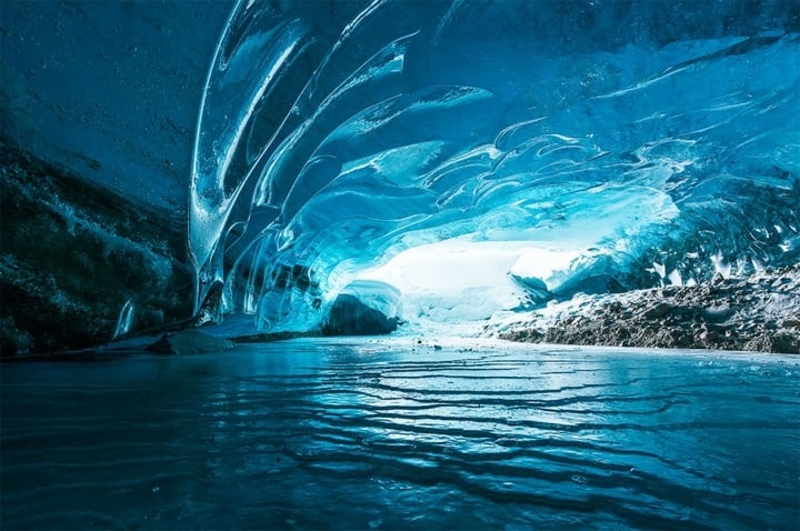
In 2016, an odd case occurred in a remote area in Siberia, in which a 12-year old boy died from what they later found to be an anthrax infection. Several other people in the area were also treated in the hospital for the same thing. Scientists believe the cause to have been a caribou carcass from nearly 80 years ago that had been frozen, until a heatwave dethawed it that year. Since the body was no longer frozen, the bacteria got into the soil and water nearby, which ended up causing the infections.
The Basket
Not all of the findings necessarily revolve around hunting, because the early humans were of course gatherers, too. Among all of the artifacts found within the Yukon area was an intricately carved birch basket. Scientists dated the basket to nearly 650 years ago, and believe it was used to gather berries, and for carrying food and other items.
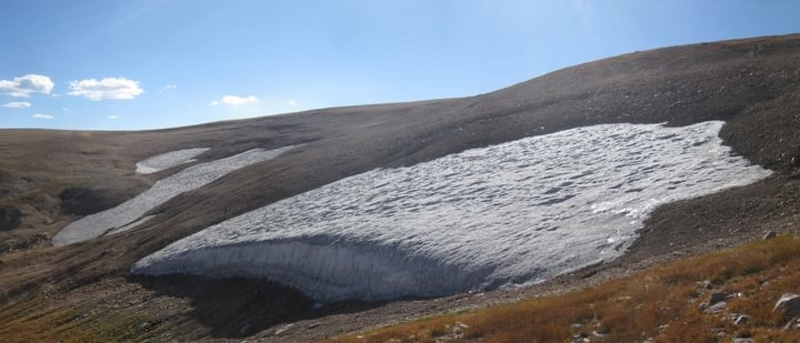
The container, which was discovered back in 2003, was meticulously woven. The dimensions of the basket were 2.3 inches high and nearly 10 inches wide. These baskets could be so tightly woven that they were even used to transport water. They would also use them for arts and crafts purposes, at times.
WWI Remnants
Every artifact and remain discovered trapped in ice around the world tells a story. Scientists and researchers use everything they find to piece together bits of history. For instance, during WWI, rival soldiers often fought at extreme elevations – which may have been good for seeing your enemy coming, but it was certainly a terrible experience for anyone that had to go up that high, and especially for those that had to stay up there for extended periods of time.
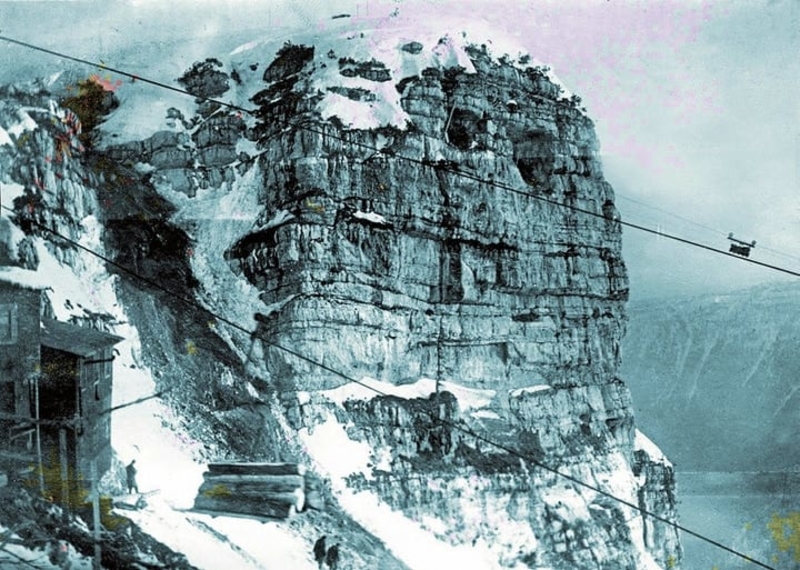
Army leaders had to get creative to stay on top of things, so they formed specialized groups of men and trained them to do battle at over 6,000 feet in the air. Unfortunately, this often meant that they suffered frostbite and ultimately froze to death on top of the mountains. Scientists have discovered bodies of soldiers that date back to over 100 years ago, but thanks to the ice, they had been very well preserved.
Vikings
Vikings were warrior-like seafarer Norseman, that raided and took over villages all over Europe between the 8th and 11th centuries. When most people hear the word Viking, they may picture Ragnarök, or funerals that involve a ship being set on fire and sent out to sea. Of course, they probably also bring to mind all of the weapons that they must have used to take over said villages.
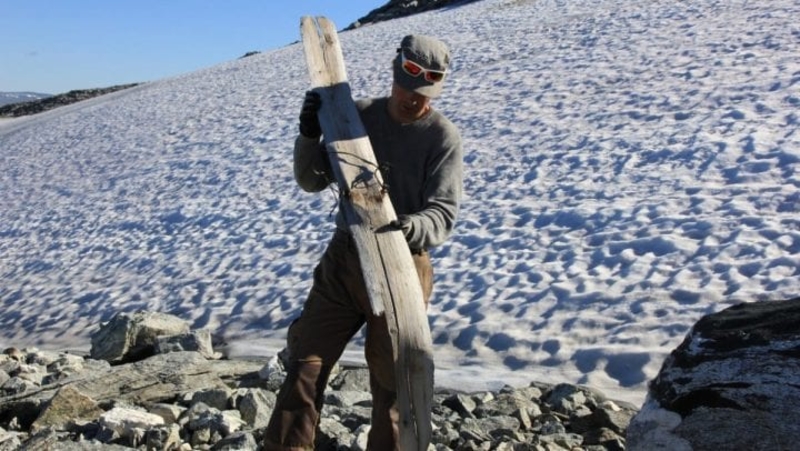
In recent years, scientists have discovered quite a few artifacts that they believe belonged to the Vikings. These artifacts, which include bows and arrows, shoe parts and even reindeer traps, have mainly been found throughout Norway. Among the treasures, were skis, which they used to get around more quickly throughout the frozen lands. Almost everything that has been found that’s associated with the Vikings has been dated between 3 and 6,000 years old.
Prehistoric Darts
Early humans heavily relied on using spears and other sharp weapons that they could easily make and use to hunt. One such weapon was the “atlatl (at-lat-el) dart,” one of which was uncovered recently by a helicopter pilot in Yukon. The atlatl darts were invented before other older weapons like bow and arrows.
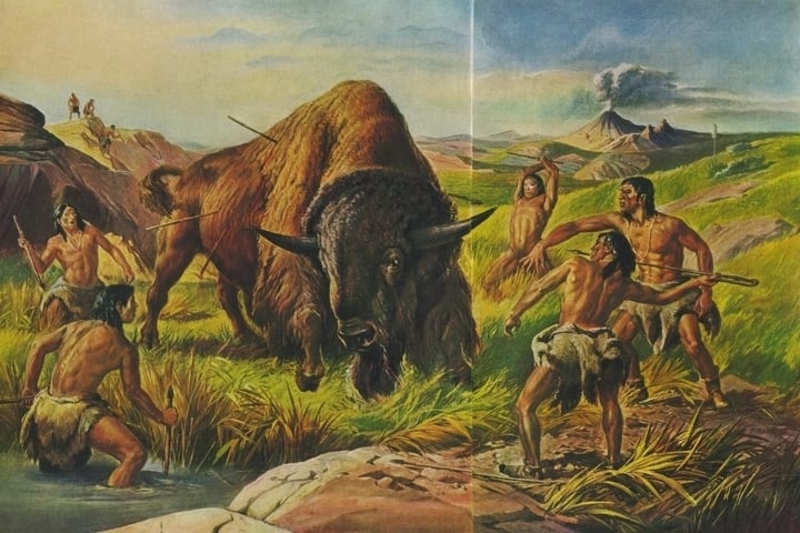
As each weapon in those days was crafted by hand, the creators took great pride in their work and even took careful time to decorate each dart to their liking. Each weapon was carved with a different pattern to differentiate between them all. Atlatl darts were made to hold and launch spears and ensured that the weapon would travel much further than if it had simply been thrown.
Frozen Fish
Now, it may be pretty commonplace to find fish that are frozen during winters. After all, fish can’t exactly get up and walk out of the river when winter hits. But this time, scientists didn’t just find a fish, they found one that froze while it was eating…another fish. Lucky for us, a fisherman found this and reported it.

During the winter time, fish tend to swim to the bottom of their watery home, since when it freezes over, the warm water typically descends. So, they usually gather in schools and hang out near the bottom until it starts to get warmer outside. This seems to tell us that in this case, the water froze so quickly that all of the fish didn’t have time to make it to the depths before freezing.
The Woolly Mammoth
Woolly mammoths are the distant relative of today’s elephants. They’re now extinct, but they roamed freely across several continents during the last ice age. The average male mammoth weighed about 6 tons and stood between 9-11 feet tall. Researchers found a very well-preserved female mammoth in the ice in Russia – her brains and blood vessels were still intact.

Yuka, as the mammoth was named, was said to be somewhere between 6 and 9 years old when she passed. By studying the brain, scientists were able to determine that the personality and actions of the woolly mammoths were probably very similar to those of modern elephants. Even though other mammoths have been discovered frozen in the ice, Yuka was the only one whose brain was still preserved enough to examine.
The Woolly Rhino
As often as it is that someone seems to stumble upon a woolly mammoth (so often that there are literally mammoth tusk hunters) it isn’t so often that one finds a woolly rhino – especially not a baby one. But, that’s exactly what happened to a hunter in Yakutia, Russia in September of 2015. Scientists claimed that the rhino was only about 18 months old at the time of her death.
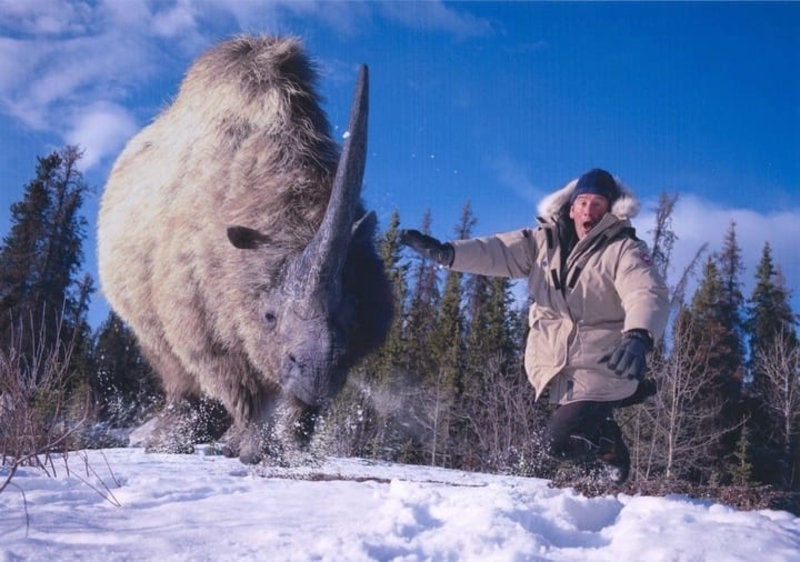
Yakutia, which is more commonly called “Sakha,” has some of the lowest temperatures in the world – so you can imagine that it would be pretty hard for a baby animal to survive in the winters out there, even with a thick coat of fur. The little woolly was named “Sasha,” and has been the only one of her kind (and age) discovered so far.
The Gopher Trap
One thing that hasn’t changed all that much over the years is animal traps. Sure, they’ve come along, but the ones used many years ago were effective, too. Take for instance the “gopher stick.” The stick was a trap that humans made to catch animals, using a stick, a string and a snare.
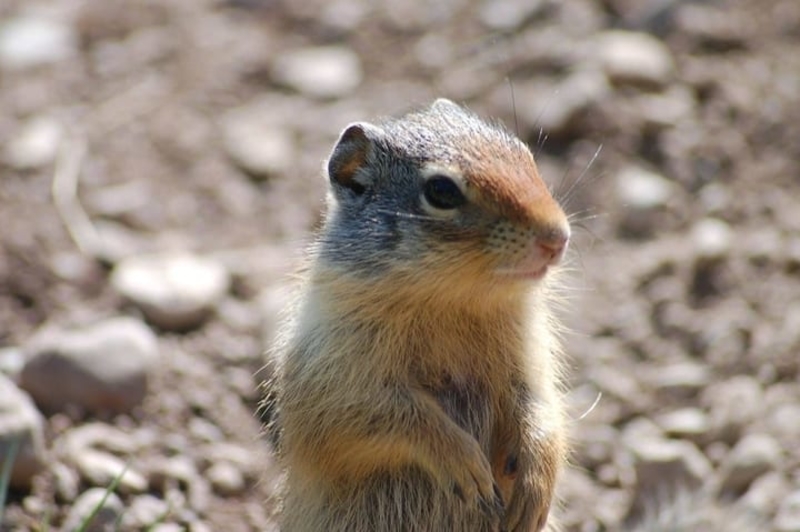
Gophers were, and still are, a nuisance, as they like to eat up all of the crops in one’s garden – something that early humans simply couldn’t afford. Besides them being pests, they were also eaten in those days as a source of protein. The apparatus worked by capturing the gopher as they came out of their hole. Hundreds of years later, around 1900, the first gopher trap would be patented by Zephyr Macabee.
Incan Sacrificial Rites 2
One of the main Gods that the Incans worshipped was their sun God – Inti, who they believed was responsible for the crops that were provided to them (well, they weren’t completely wrong – plants do need the sun to grow.) But in their minds, Inti needed blood to do his work, and they believed he wanted the blood of children.
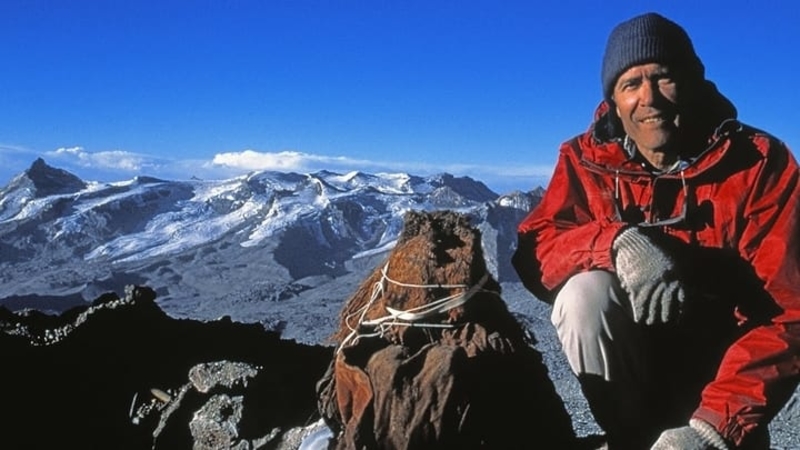
In 1995, scientists discovered the frozen remains of a girl between the ages of 11 and 15 up on Mount Ampato, in Peru. That same year, a few archaeologists led an expedition in that area and found 2 more mummified children, all of which they determined had been a part of these Incan sacrifices.
Ice on a Plane
This one is a little easier to imagine, in a sense that planes do crash on a regular basis, and of course, it’s bound to happen over tundra-like areas. This is what occurred to the military members on the C-124 plane that crashed into a mountainous area in Alaska in 1952. The plane would be deemed missing for decades, until it was found many years later…

In total, 52 people lost their lives in that crash, including 41 passengers on board and 11 crew. Sometimes, rescuers are able to descend and search for survivors. However, the area was considered to be much too dangerous, so they were unable to search through the debris. The plane was ultimately found in 2012.
Wooden Pieces of History
In 2007, an archaeologist by the name of Craig Lee headed out to the ice patches to see what he could dig up on his own. He ended up finding some very rare wood, which he took back to the lab to test. He discovered that the wood was made from birch saplings and dated back to over 10,000 years.
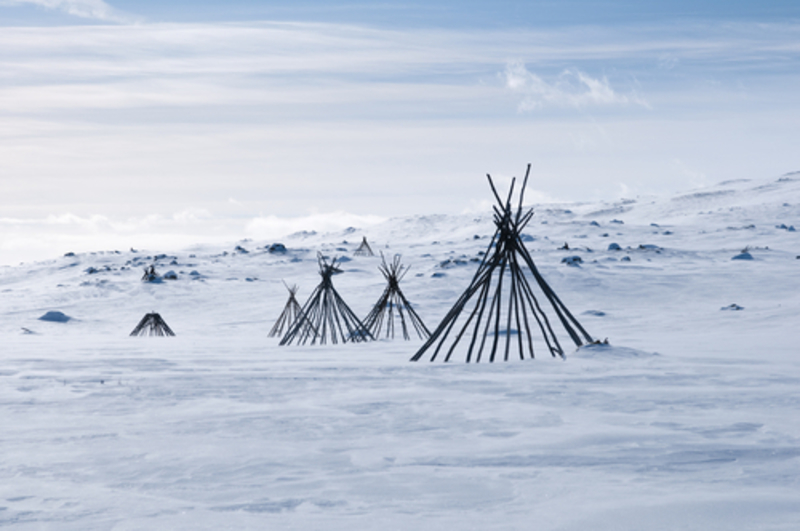
This type of wood was used for many things in those days: weapons, shelter, and more. In this case, scientists believe that the pieces they found were used to bind together and form small tents which hunters could use while they were on an animal stakeout.
The Best Areas for Discovery
Glaciers tend to keep moving, which makes it fairly difficult to find anything underneath them until they melt. But with ice patches, scientists are able to study one spot for longer periods of time, due to the fact that they don’t move on their own accord, as glaciers do. Ice patches can be found in multiple areas of the world, and the artifacts found within them can illustrate what our ancestors were doing in those particular areas, at least.

These alpine and sub-alpine patches are being discovered more and more as the ice continues to melt. One particular archaeologist has studied these areas in 16 forests across America alone, not including all of the areas up North. In fact, Canada has some of the most active areas, including over 43 ice patches in the Yukon. Scientists have found over 200 artifacts and 1,700 sets of remains.
The Copper Arrow
Another thing besides animals that has evolved over the many, many years that life has existed on planet Earth, is weaponry. Automatic rifles, grenade launchers, and all of the other super cool weapons that exist today, all stemmed from the simpler forms of destruction – like arrows. A couple of years ago, an archaeologist working on a frozen lake in Canada saw something shiny protruding from beneath. Upon closer examination, he found that it was an arrowhead!
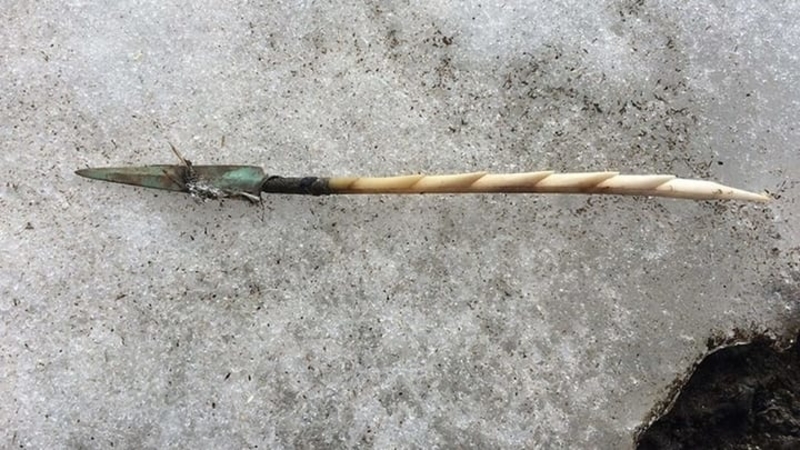
Of course, arrows are still used today, so at first glance, they didn’t know just how special their find would turn out to be. After studying the weapon, however, they discovered that it was made out of over 99% copper, and it was held together with barbed wire. The fact that it was made out of such a pure amount of copper led them to believe it was from the area where it was originally found. Scientists dated the arrow back to over 1,000 years, when indigenous tribes inhabited the land.
Red Ice
Antarctica is known for some pretty wild environmental and geological discoveries; like massive underground lakes…or a frozen waterfall that straight up looks like something you’d encounter while staying at The Stanley Inn, as a character in Stephen King’s “The Shining.” This area of the continent has become known as “Blood Falls,” and displays a trippy phenomenon which makes the water run red like blood.
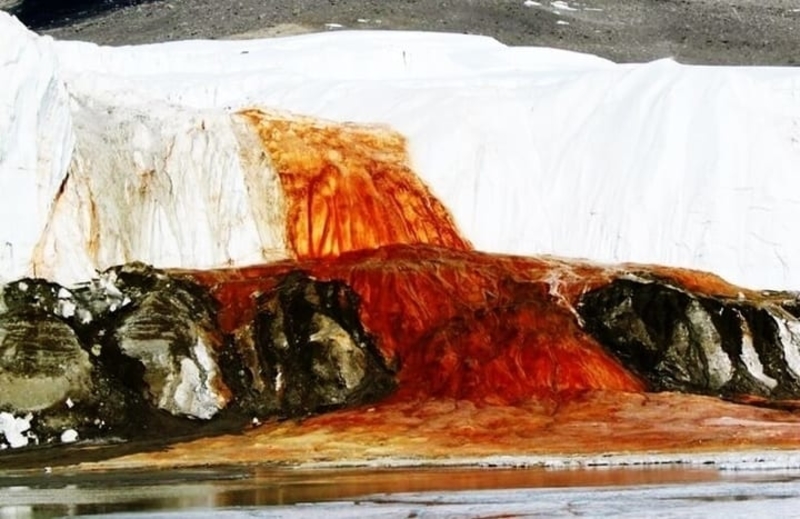
There are a few natural explanations as to why water can turn this color, including massive amounts of iron from a subglacial pool deep underneath the surface. The discovery was made back in 1911, by an Australian geologist named Griffith Taylor – hence why the area is now known as “Taylor Valley.” The scene is truly spectacular – a must-see for anyone who is able to make the journey out to Antarctica.
Irresponsible Ownership
These fluffy, warm-blooded animals were someone’s responsibility. After all, donkeys are often kept as pets and used for things like transporting different items across long distances in arctic areas. But whoever was in charge of taking care of them, completely dropped the ball and allowed them to freeze to death.
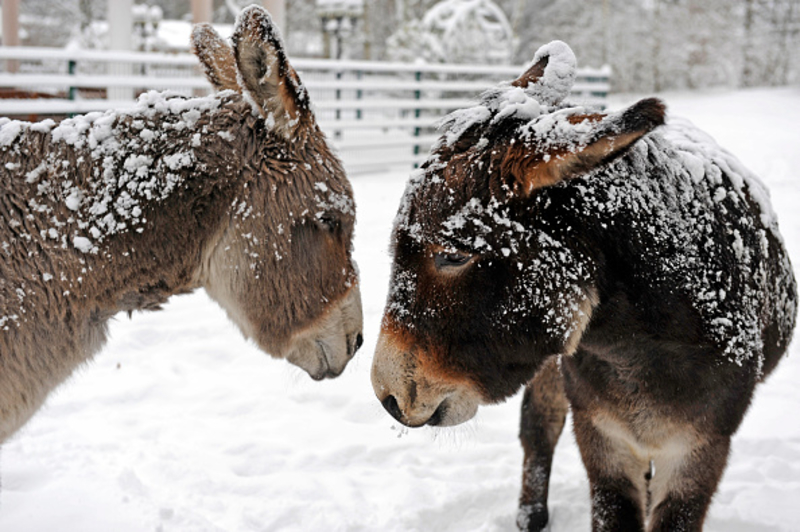
The animals, who should have had some type of shelter to protect them from the icy cold, were left outside. They were found still standing up, with icicles forming all over their bodies. Luckily these days, many areas are implementing strict animal abuse and neglect laws and prosecuting those that are responsible for tragedies like this.
Ice Mummification: How it Works
It may be pretty hard to imagine how ice can preserve bodies from thousands of years ago and keep them intact. So, how does it work? Well, in the same way ice prevents our food from going bad: it slows down particles, including bacteria, that eat away at things and eventually cause decay.
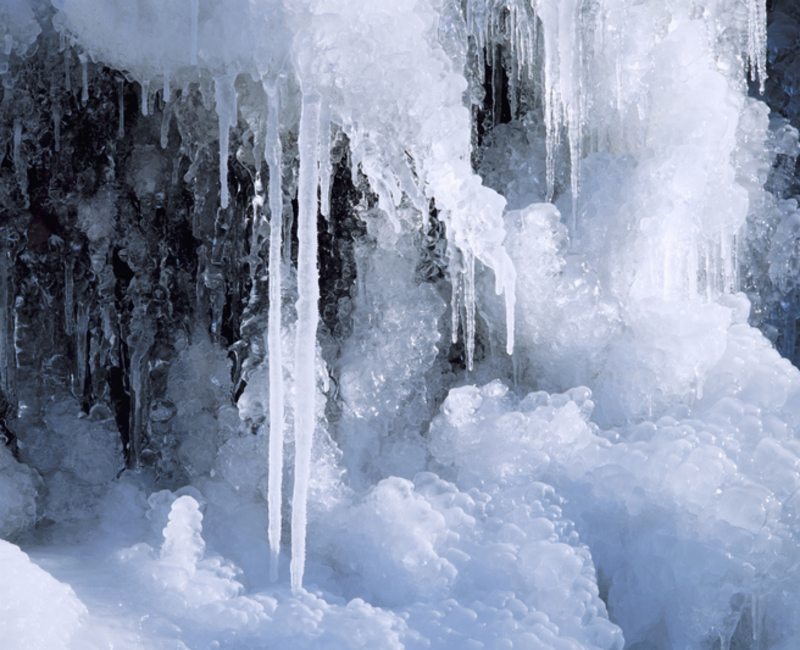
No moving particles = no breaking down, hence why things that get literally frozen solid within ice can stay intact for thousands upon thousands of years. This is also the reason why if someone accidentally loses a finger or toe, the first thing that’s recommended is to put it on ice and hightail it to the emergency room.
The Sabretooth Tiger
As much as you may want to go, “aww, big kitty,” you probably wouldn’t want to go anywhere near one of these guys if they were still around today. After all, some sabretooth tigers could grow to be the size of a horse and weigh between 800 and 900 pounds. However, the two discovered by scientists in Siberia were only cubs – so they were about the size of a modern-day tiger. And, if you’re unfamiliar with why these big cats are named as such, it’s because of their two large front teeth that are shaped like curved swords.
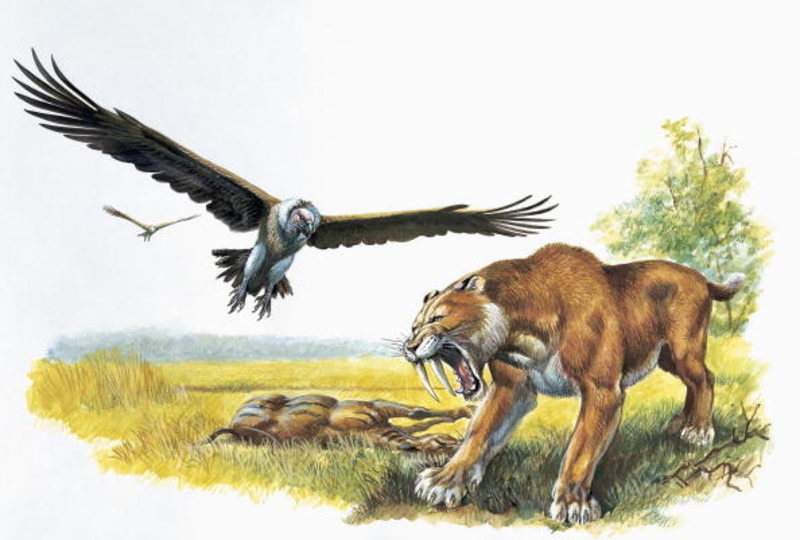
Sabretooth tigers, whose scientific name is the “Smilodon,” existed in multiple parts of the world up until about 10,000 years ago. The big cats could even be found in North and South America. Scientists are not entirely sure why this species went extinct, although some speculate that it had to do with their reliance on eating large herbivores, coupled with climate changes.
The Spear
Spears were invented by our ancestors, some 300-400,000 years ago. Scientists believe that the first spears to exist were wooden, and created to assist the first humans in hunting and fighting. Metal spears, however, weren’t invented until much later.
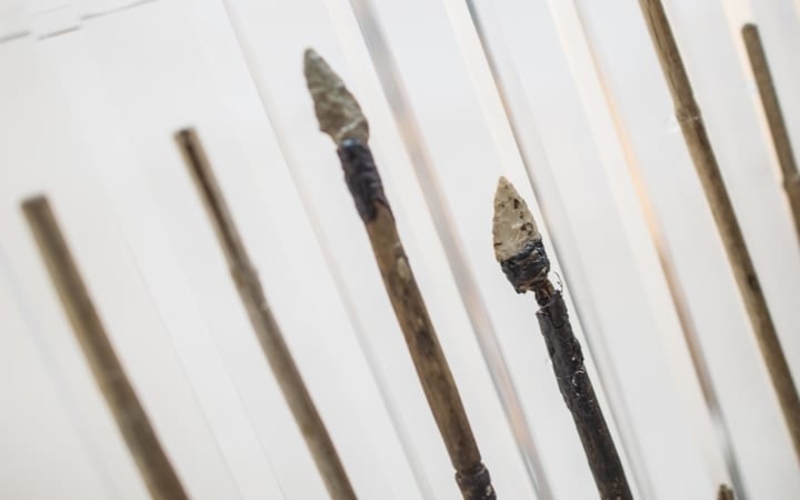
A spear that was found in 2007 is estimated to be over 10,000 years old. The spear was fairly small, which scientists believe means that it was used for throwing purposes, rather than close-range combat. These types of weapons were used by tribes all over the world in the prehistoric age.
Ice Patch Archaeology
With the constant melting of the glaciers, more and more ice patches have been revealing themselves. This phenomenon is especially prevalent in The Yukon, where scientists have discovered an entire series of ice patches full of artifacts. First discovered in the 1990s, the area has become so popular with researchers that they created a name for the study: ice patch archaeology.
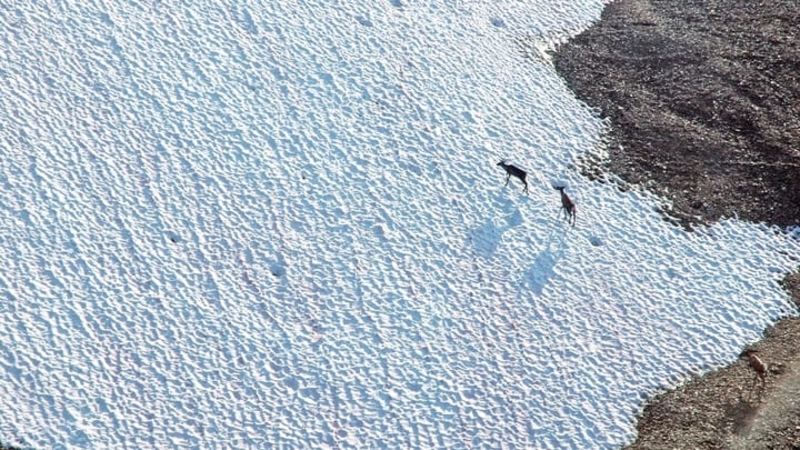
Also known as “The Yukon Ice Patch Project,” so many scientists have gotten involved in it that it is still going on today. Teams of archaeologists get together and fly into the area, staying for days to months at a time to search for anything interesting trapped under the ice. Aside from the patches in Yukon, others exist in areas of Alaska, Colorado, Norway, and British Columbia, among a few others.
More Caribou Poo
Caribou, which are also known as reindeer, if you didn’t know, are a common theme in these ice-patch archaeological discoveries. But as odd and well, gross, as it might seem, reindeer feces can actually tell scientists a lot about history. Through extensive testing on the droppings, we can find out a lot about the animals that walked the Earth before our time – what they ate, where they lived and what their daily activities were.
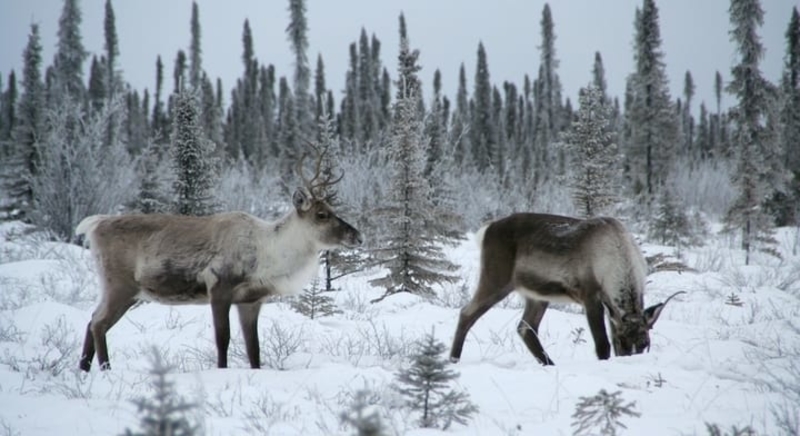
In fact, not only can animal droppings reveal the dietary choices of animals. Scientists have recently discovered how to test for certain types of hormone levels to determine whether or not the creatures lived a stressful life. Yep, you heard it here first – they can test reindeer poop to see if the animals were happy or not!
The Bow
You would think that with global warming unearthing all of these fantastic ancient tools and artifacts, that all of the available archaeologists would be out there digging around. Unfortunately, most of these areas are located deep within mountainous areas with extremely rugged terrain – making them very difficult to navigate. This means that these expeditions are not only treacherous but very expensive, too.
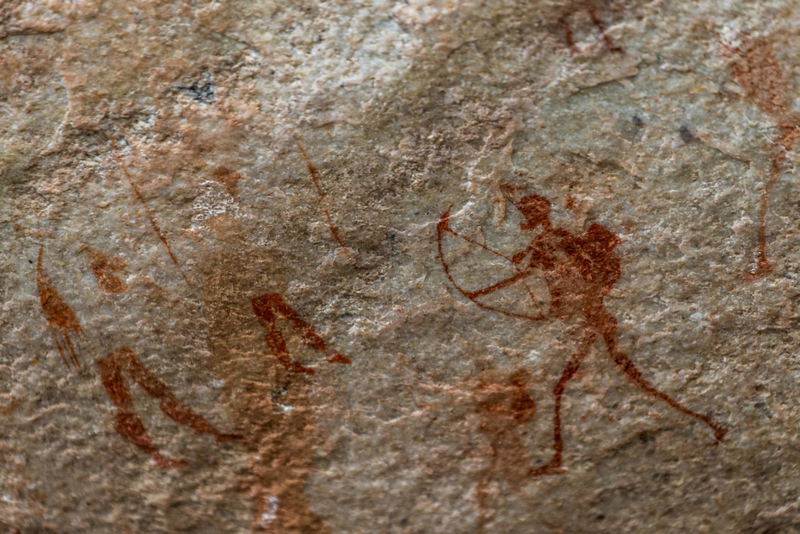
One archaeologist named Tom Andrews made it his life’s mission to explore these ice patches. So, he started raising the necessary money it was going to take him to make his dreams a reality. Finally, in 2000, he had the funds he needed and embarked on a journey to the southern Yukon via helicopter. What he found made all of the money spent worth it – a 340-year-old bow made of willow bark.
Dino-sicle?
Sometimes, the creatures that are found within these icy graves aren’t even from our time-period. In the same way that scientists find fossils in rocky areas, they can still happen to wander right into a dinosaur that’s been preserved in the ice. How cool would it be to find the actual entire body of a dino? This particular specimen has been called the best that they’ve found.

An oil worker stumbled upon the mummified Noctosaur back in 2011. Scientists say they believe the animal probably got carried out to sea in some type of flood, sank, and was then preserved when the waters froze, and it just stayed intact over time. The dinosaur weighs over 2,500 pounds and is coated in spikes, which was one of its methods of self-defense.
This Giant Squid-like Thing
Sometimes, scientists stumble upon something stuck in the ice that they simply just can’t explain. Take, for instance, this odd-looking creature who resembles the giant squid. The animal was discovered frozen in a remote part of Antarctica, and researchers still aren’t entirely sure what it is.

When we look closer, we see that the thing can more accurately be described as a horse-squid hybrid. Okay, not really, but it does look like it has the fur of a horse. We just hope that the scientists (or whoever found this thing) had the wherewithal to unfreeze the thing and take a look.
The Yukon Ice Patches
Scientists are able to make these incredible discoveries in some places of the world much more frequently than in others – including deep in the Yukon. In 1997, an entire series of these ice patches were found, starting with the one that was discovered on Mount Thandlät. Since then, they’ve created entire teams of cryologists, archaeologists and more to study these particular areas, since they seem to be a hotspot (figuratively speaking) for finding artifacts.
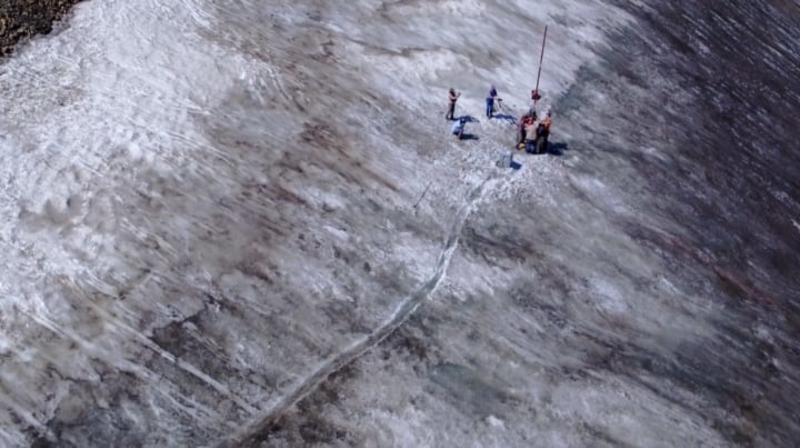
The reason why researchers seem to find all of these things within these patches is that unlike glaciers, they are stationary. As they can’t gain the necessary mass to slide downwards, they stay put, which makes it much easier for humans to find goodies buried deep within them. Most of the artifacts that have been found in the Yukon ice patches are over 9,000 years old. They’ve discovered everything from dart shafts to a piece of a 19th-century musket. All-in-all, scientists have found over 200 artifacts within the ice patches since the year they were discovered.
Fox Blocked
It may not be so often that you hear of modern animals being found frozen solid in ice, but it definitely happens. After all, it’s fairly easy for wild animals who live in tundra-like environments to freeze to death. Of course, maybe it’s not so often that their carcasses are found preserved in a block of ice, but that’s exactly what happened with the fox that a hunter found in Germany.

The same hunter that stumbled upon this poor fox claims he’s also found a couple of other animals in similar situations, including a deer. Now, the fox block is displayed like some twisted statue outside of a hotel in Germany. For some, maybe it’s considered art? Or perhaps it stays there to remind other animals (and humans) what can happen to them if they wander off in the freezing wilderness? Either way, it’s pretty creepy and off-putting, right?
Continued Discoveries
Scientists have determined that glaciers today are actually melting at a rate that’s 5 times faster than in the ’60s. In fact, it’s reported that the world’s glaciers lose over 360 billion tons of ice each and every year. While this means that sea-levels will continue to rise at a very fast pace, and other major environmental changes may occur, it also means that archaeologists will have a field day observing these areas.
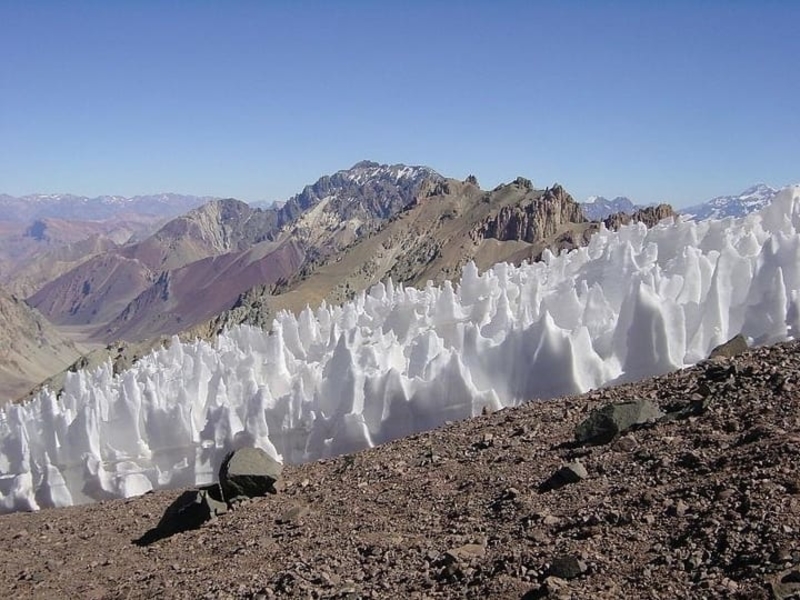
Every single finding that these researchers make within these arctic and sub-arctic realms, tells us more and more about the civilizations that lead up to the way the world is today. Scientists steadily discover artifacts like weapons, gathering tools and items of clothing that tell the stories of our ancestors. As the glaciers continue to melt and more ice patches reveal themselves, this particular field of archaeology will continue to grow, as it has been for the past several decades. So, keep your eyes peeled, because new and exciting discoveries are being made on a pretty frequent basis these days!
The Kingfisher
The Kingfisher is a kind of bird who actually happens to freeze to death in ice more often than most other birds. Why? Mainly because the Kingfisher isn’t scared to dive straight into it to find food. Unfortunately, this means that a lot of them end up freezing before they’re able to finish their dinner.

There are quite a few images of this species trapped in ice, but this particular one happens to be from Bavaria. It’s pretty commonplace to see these poor little guys during wintertime in Europe. In France, people often skate around on the frozen canals, where the birds can be seen both already frozen and diving in to search for food. The poor birds are just hungry, it’s unfortunate they don’t have an alternate source of food. Maybe the ice skaters could bring them supper, so they don’t need to risk their lives…
Ice Age Puppers
Deep in the frozen tundra of Siberia, hunters happened to find a creature that was a little less scary and a bit more adorable. The discovery was a group of small canines with their snouts sticking out of the ice. Scientists who studied them found they’d been eating a lot of grass – which they think means that they were abandoned by mom, or got lost, and were starving before they froze. Poor doggies!
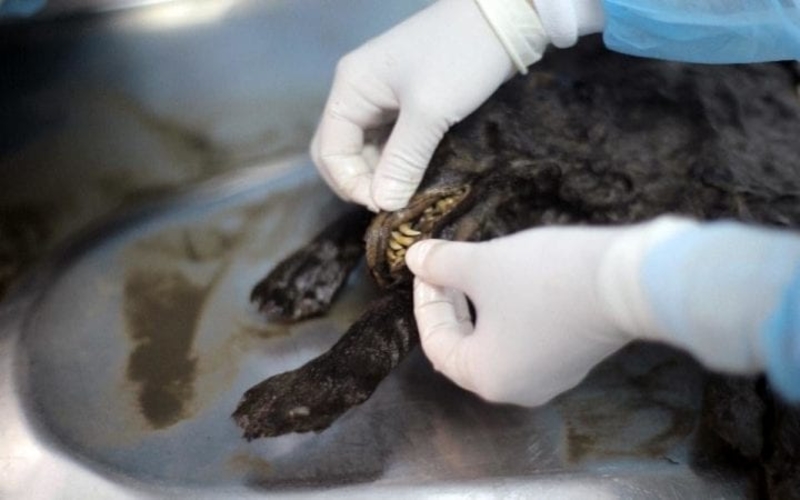
The hunters that made the original discovery were actually out in the region in search of mammoth tusks – boy were they in for a surprise! The bodies were found with their skin and guts intact, and were estimated to be nearly 12,500 years old. In many ways, they were similar to modern dogs, but they weren’t exactly identical. They were, however, still pretty cute.
Occult Ritual Remains
Up until this point on our list, most of the discoveries being made were either natural, understandable, or even somewhat adorable, but now we get to the more gruesome side of things. First, it’s important to remember that past civilizations were a lot less…civilized…and had less knowledge of the way the world works. Which probably contributed to the human sacrifices made back then, mostly to appease their “Gods.”
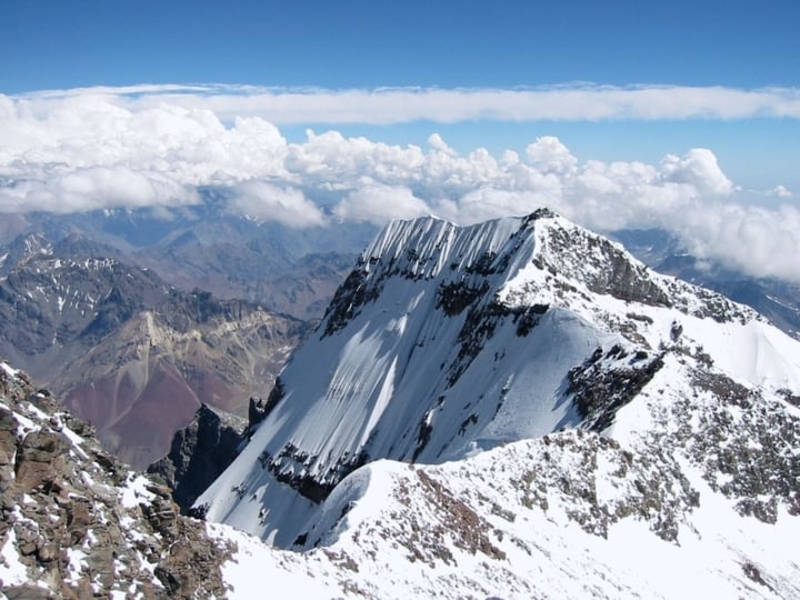
One such ancient civilization that took part in these types of rituals were the Incans. Incans would use children in a ritual that came to be known as “Qhapag Hucha.” High priests of the tribe would take the children to the highest peaks of their area and strangle them, bash their heads or leave them behind to freeze to death – all in an effort to make their God happy. Incans used children for these rituals because they were viewed as “pure.”
The Dart Shafts
While most of these discoveries have been found in the forest or along coastlines and other aesthetically pleasing places in the wilderness – this one was found somewhere, well…less attractive. In 1997, hunters in Canada stumbled into a large area of caribou poo, which was probably a good sign for them, considering that’s what they were hunting. Little did they know what they were about to find – a dart shaft that dated back to over 4,000 years ago.
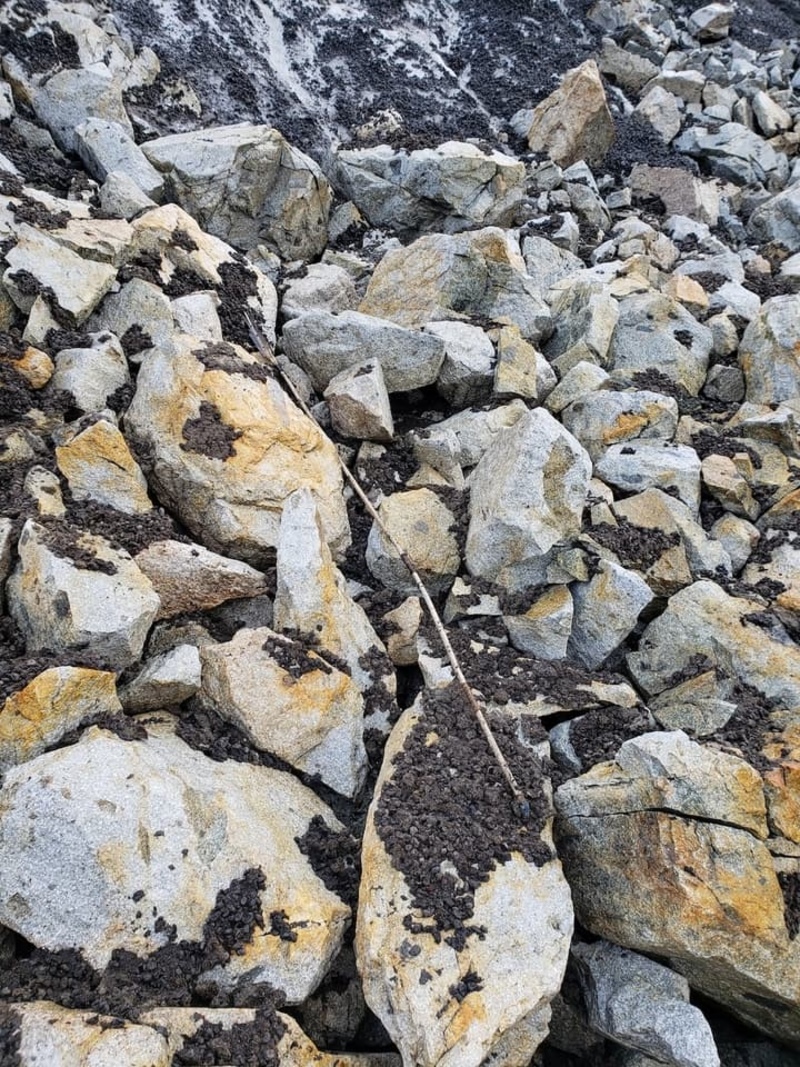
Over the past few decades, a new type of archaeology called “ice patch archaeology” has risen, in which scientists wait for these large areas of ice to melt and then explore everything in and around them. The animal dung can actually tell researchers just as much as what was found in it. Scientists can use it to determine what the animals may have eaten and even what kind of environment they may have inhabited.
Otzi
The Otzi man is perhaps one of the most well-preserved human bodies from the BCE times. The corpse was discovered in the Australian Alps in 1991, by two tourists who thought they’d stumbled upon someone more…recently deceased. The body was so intact that scientists were able to determine that his last meal was something like bacon, although it was most likely made from goat.
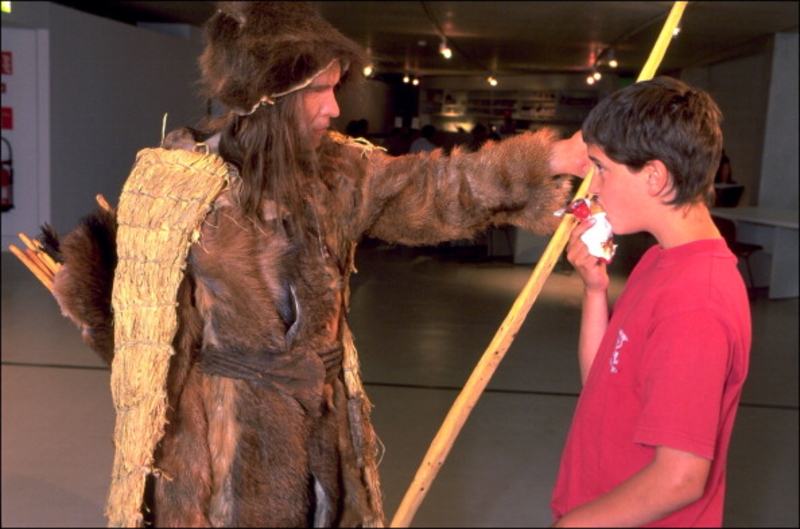
Researchers said that the man, who was about 5’3 when he died, was extremely sick. This poor guy suffered from a number of ailments before his death, including gallstones and whipworms, which is a parasite of the intestines. Though surprisingly enough, it wasn’t the illnesses that killed him, but rather a blow to the head.
Melting Away
The fact that the atmosphere of the Earth is steadily becoming warmer is one reason why these discoveries are being made year after year, recently. On the other hand, the melting of these ice sheets is actually contributing to the rising temperatures, too.
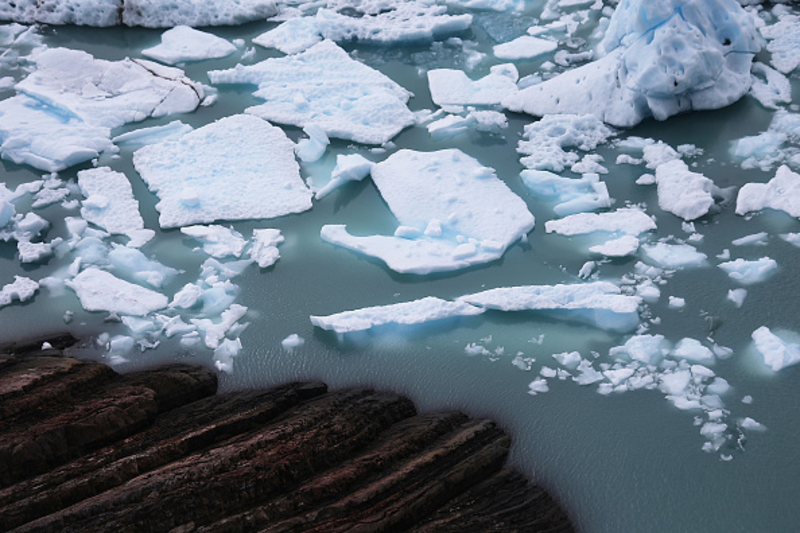
As terrifying as global warming is if you really stop to think about it, at least it makes it possible for scientists to research all of these amazing discoveries from thousands to millions of years ago. And fortunately, the Earth will most likely remain intact for the rest of our lifetime. However, scientists have noted that these glaciers are currently melting at a rate that’s over 4-times as fast as they were disappearing before the 1970s.
Stayin’ Alive, Stayin’ Alive…
While it may seem like any animal that’s found trapped in ice would be long dead, that isn’t always the case. Scientists have discovered some particular species of animals that are able to survive in the frozen water. For instance, there are some kinds of alligators that are able to live through an entire winter being in the ice. Crazy!

Of course, we have to remember that not all animals have the same body type and bodily functions. If any kind of creature with a similar makeup to ours got trapped in the ice, our internal organs would quickly shut down. But these alligators are cold-blooded and able to freeze themselves with their snouts sticking out of the ice in order to breathe and survive.
A Lighthouse in Michigan
You know how we mentioned that an entire building can become trapped in ice? Well, it actually happens more often than you may think, especially in Michigan. When the temperature drops below freezing, but the water surrounding the lighthouses isn’t frozen yet, huge icicles form over the structures and create this captivating result.

The frozen structures look like something straight out of a movie – especially the way the spiral staircase looks! All five of the beautiful lighthouses on the great lakes tend to freeze up for part of every winter. The reason why this tends to happen so often near the great lakes is because they’re all so large – they’re responsible for the weather that surrounds them!
Global Warming
Unfortunately, global warming is very real, and it’s doing some pretty scary damage to our planet. Although that may not be the worst part, which is that numerous tests have shown that humans are actually the number one cause of climate change. Since 1977, every year has gotten progressively warmer. Computer programs being used by scientists to track the data reported that 2016 was the hottest year in known history.
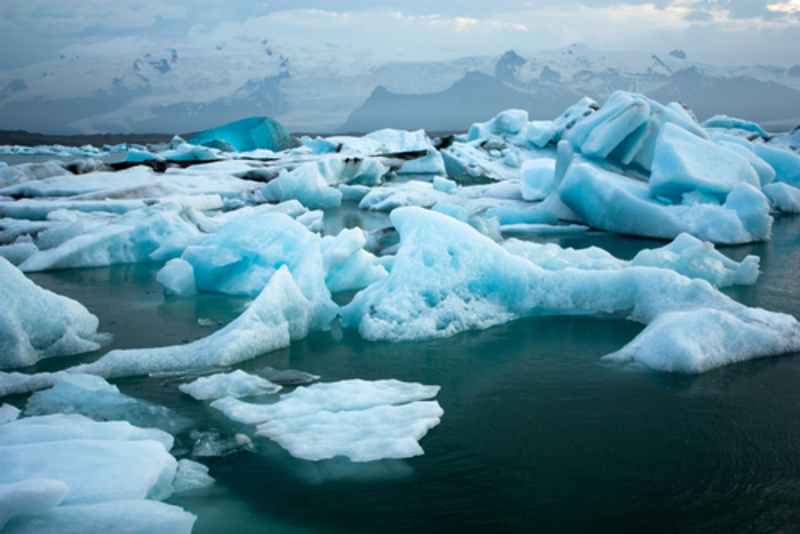
10,000 years ago, when the last ice age occurred, the temperature of the Earth was nearly 13 degrees cooler than it was at the beginning of the 2000s. Researchers have noted that, at the rate the glaciers are disappearing, some mountain ranges might be completely free of the remains of these glaciers within the current century. However, it has also been reported that, for some reason, 19 major glaciers in southwest Asia seem unaffected by the rising temperatures.
A Lost Range of Mountains
For 50 years, scientists have been trying to discover more about the 10,000-foot subglacial mountain range that was found in Antarctica. The ice that coats the top of the mountains is more than 2 miles thick, which has made studying the area almost impossible for researchers.

The range of mountains is thought to be as large as the European Alps and have peaks that reach up to 3,000m over sea level. The area has since been named the Gamburstev mountains, and although they know approximately how big it is, scientists are still working to determine the exact shape and size.
This 20+ Million-Year-Old Lake
Antarctica continues to surprise everyone with hidden treasures buried deep within. In 1996, the discovery of a 5,000 square foot subglacial lake was made by Russian scientists.
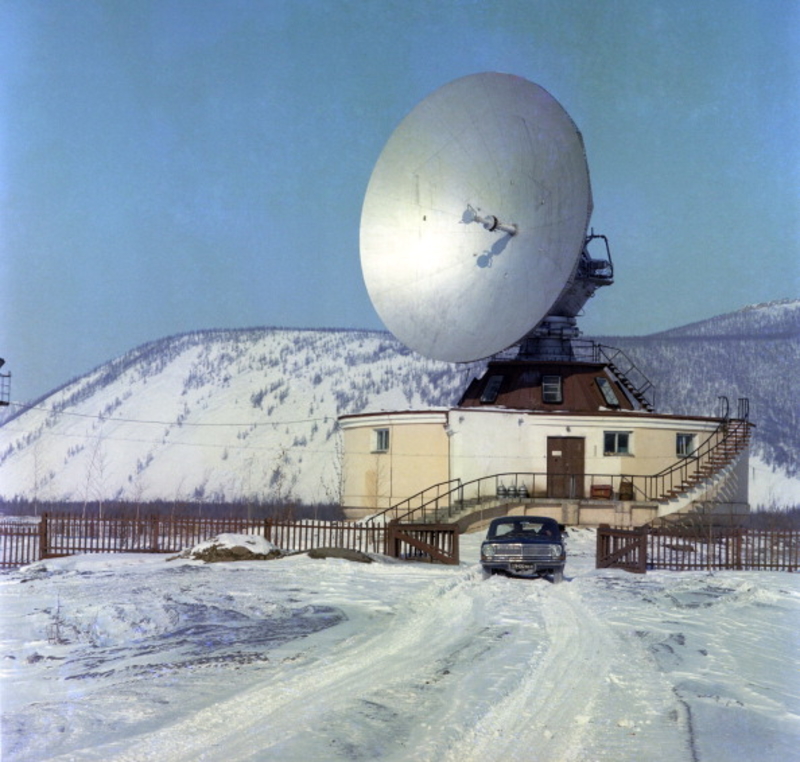
The body of water, which happens to be the 16th largest of its kind, was named after a research station in the area. Researchers believe that the lake was formed between 20 and 30 million years ago and that it is one of many connected by a system of subglacial rivers. The Vostok region of Antarctica is where the world’s coldest temperature has been recorded, a whopping -128 degrees Fahrenheit in the 1980s.
Never-Before-Seen Life-Forms
The discovery of Lake Vostok is exciting enough in itself, but you can imagine how thrilled researchers were when they discovered life-forms that are several millions of years old. Over 3,000 different life-forms have been found in the region, meaning scientists stumbled upon an ecosystem they never even thought possible.
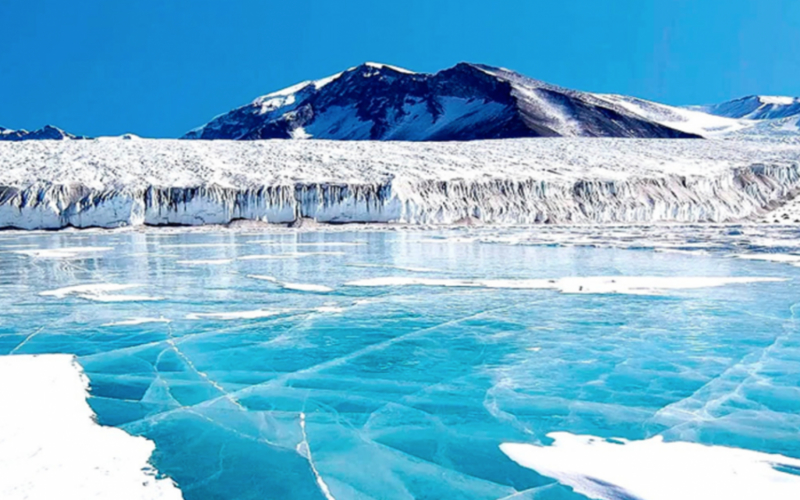
Scientists are just now beginning to understand that it’s possible for life to survive in places that were deemed too hostile to support life in the past. Lake Vostok is more than 4,000m below the ice, where there’s been no sun for ages, and yet these organisms were able to thrive.
This Dinosaur Fish Graveyard
A melting glacier in Chile revealed an entire graveyard of ichthyosaurs (fish lizards,) which lived on Earth about 90 million – 250 million years ago during the Mesozoic period. Fish lizards are known to have been incredibly quick swimmers, who killed their prey (eels and other fish) by biting into them with their 100+ razor sharp teeth.
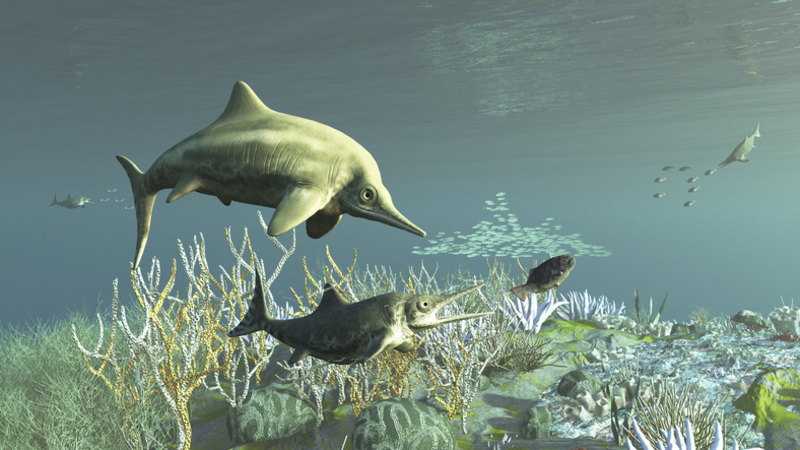
Scientists discovered dozens of the creature underneath the melted ice, each of which were somewhere between 10 and 16 feet long, fully grown. So, they were basically like huge crocodiles who lived entirely under the water. Some of these ancient creatures are pretty terrifying.
A Fish Eat Fish World
When this discovery was first made public, thousands of people took to social media claiming that the image was just part of some hoax designed for media attention. But someone really did find a frozen fish…eating another fish.

The sighting was made by two brothers ice fishing out in rural Indiana. Since no one believed that the image was real, the siblings went a step further in showing the world what they’d found. They recorded a video that showed them cutting through the ice and removing the fish. Take that, haters! Then again, maybe some things are better off unseen.
30,000+-Year-Old Seeds
If you’ve ever seen any of the Ice Age movies, you’ve watched the spunk little squirrel wreak all kinds of havoc while chasing his nut around. Well, it isn’t so much havoc but it’s the same type of activity that led to this discovery of a plant that’s more than 30,000 years old.

Scientists found seeds of the ancient flowering plant, Silene stenophylla, near the Kolyma River in Siberia. They believe they were buried there by a squirrel during the Ice Age. After they were removed from the ice, researchers were able to grow more of the plants.
The Initiative
After researchers discovered that it was possible to bring the plant species back to life, they imagined endless possibilities. In fact, some of the world’s greatest minds believe that seeds can save the future of humanity in the case of an extinction-level event.

Bill Gates and his wife are one of many prominent couples who contribute funding to The Norwegian Initiative, which is essentially an enormous bunker with almost 1 million different types of seeds just waiting to be regrown if they need to be. The vault is located deep in the Arctic, between Norway and the North Pole.
A Box Full of Jewels
Treasure chests buried in mysterious places just seem like part of fictional stories and movies that we see about pirates. But as they say, art imitates life, and those stories are actually based in truth. Not many of the discoveries were found frozen, however. In 2013, a mountain climber who’d been exploring Mont Blanc strolled into the local police station and set a box of treasure down on the counter.

As it turns out, the inside contained over $300,000 worth of sapphires, rubies, and emeralds. The treasure is thought to have fallen out of a plane crash in the mid-1960s.
A Frozen Volcano
Talk about an explosive situation. These strange-looking formations underneath the ice actually have the potential to do some serious damage. That’s because all of those light discolorations are frozen methane gas bubbles. But don’t let the mystery of this sight entice you into spending too much time standing around the areas in which the bubbles appear.
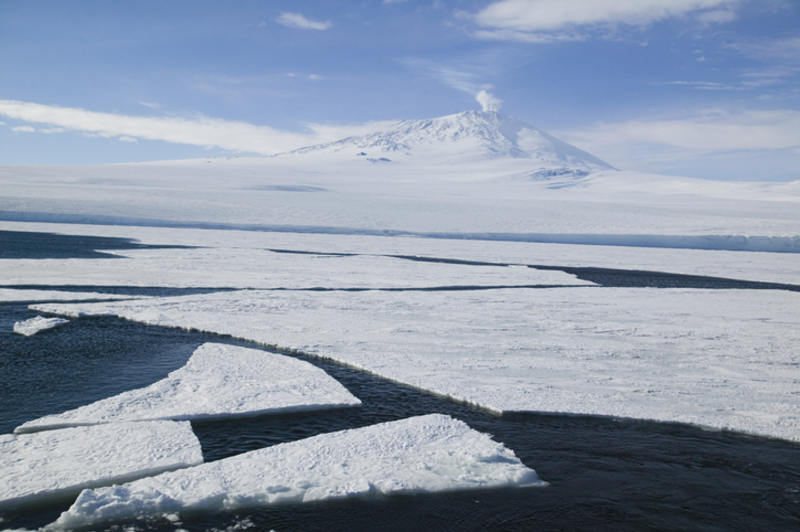
If for any reason the larger ones happen to blow with you next to them – you’re not going to have a very good day. Scientists also claim that the climate will continue to get warmer as the gas escapes back into the atmosphere.
A Message in a Bottle
This Alaskan teen had quite the surprise when he happened to find a message in a bottle trapped under some ice near his home that appeared to be several decades old. He took to social media with the note that he found inside and posted it for all of his friends and followers to see. The note was written in another language, Russian, he presumed, so he asked his network to chime in if they had any idea where the note originated, or what it was about.
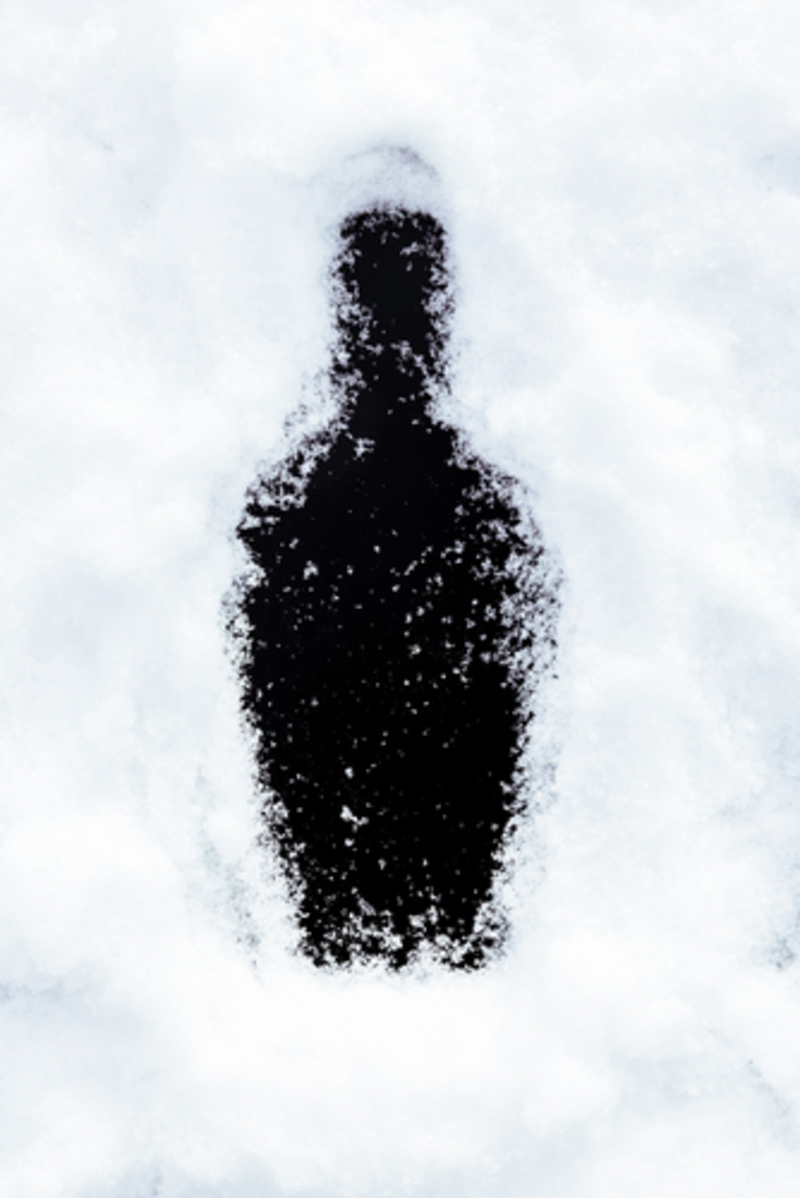
As it turns out, the message had been written all the way back in the Cold War. It came from a Russian sailor, who wrote for anyone that found the note to please get in touch with them and let them know where it had been found. Unfortunately, it was a little late for that.
Bacteria Galore
Some bacteria found in the permafrost in different areas of the world is thought to have originated several million years ago. Scientists recently pulled out some samples, frozen in an enormous ice block, that were over 700,000 years old.
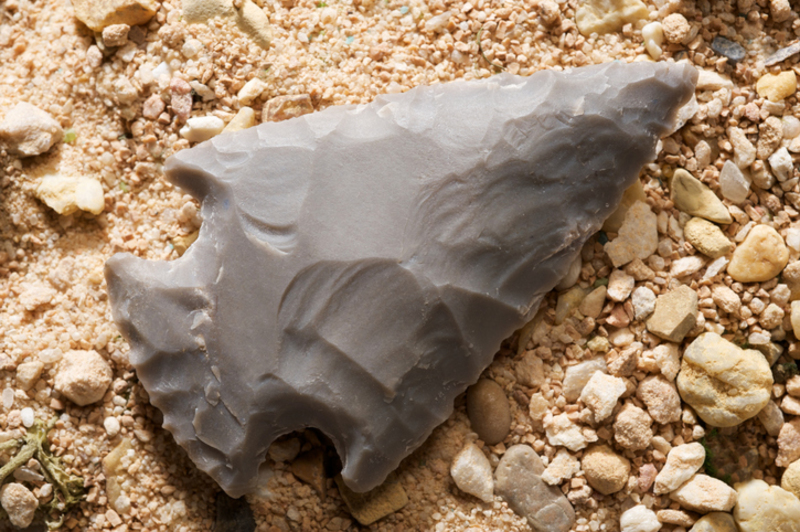
These Stone Age cells have been able to give researchers a peek into the climate of the world as it was way back when. But scientists fear that as more of the world’s ice melts away and releases more bacteria, more ancient diseases could return to wreak havoc upon certain parts of the world. Of course, they also can’t say for certain, so there’s no reason to worry about a zombie virus outbreak just yet.
Pithovirus
The Pithovirus was first discovered only a few short years ago in 2014 and was found in Siberia in ice that’s more than 30,000 years old. The virus can latch on to its victims and cause them to literally burst wide open. Luckily, Pithovirus is only known to affect amoebas, so don’t have to worry about some ancient virus coming back to wipe out the human population…at least, not this virus, anyways.

But its discovery has also brought other concerns to light, such as there might be another virus hidden deep within the permafrost that can kill humans.
Signs of Alien Visitors?
The circumstances in which the life-forms in Lake Vostok were found are being treated as if they’re alien beings from another world, and in some ways, they are. After all, these creatures were able to survive under conditions that would surely kill any animal on the face of the Earth. The fact that they’re so different from anything scientists have ever seen before makes them almost extraterrestrial.
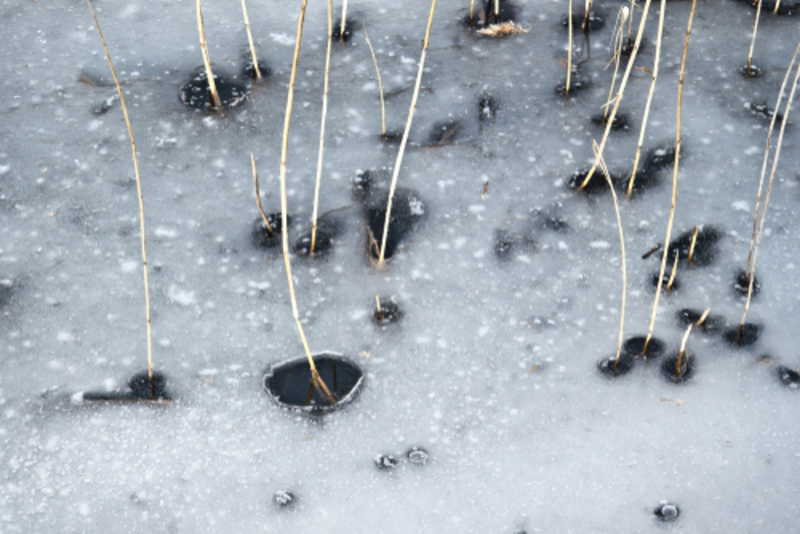
Whether or not you consider the forms of life found in the subglacial lake to be alien largely depends on what you consider to be “our world.” Sure, technically they exist on the same planet, but they had no sunshine and the temperatures were insanely low, so it’s far from the same type of existence as life on Earth!
Lyuba: The Baby Mammoth
This poor baby woolly mammoth didn’t stand a chance against the frozen tundra of Russia. She was discovered near the Yuribei River in 2007 by a reindeer herder that happened to be passing by the area. Researchers dated her perfectly preserved body to more than 40,000 years old.
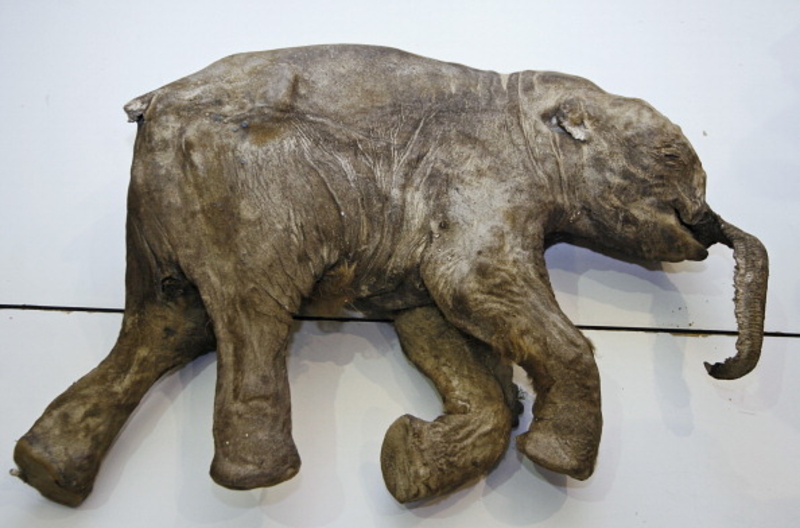
After scientists performed an autopsy of the mammoth, they found that it wasn’t the ice itself that killed her, but rather the mud around the banks of the river. Apparently, her trunk was full of mud, which leads them to believe that she suffocated.
The Icy Pyramid
Scientists first stumbled upon what they thought was another pyramid buried deep in the icy mountains of Antarctica between 1910-1914, but they didn’t reveal the discovery to the general public until several decades later.
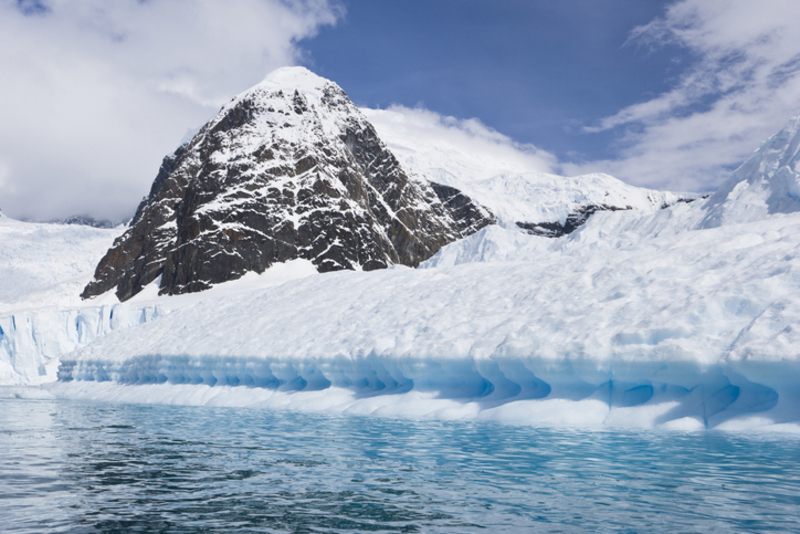
The secretive nature of the findings led to several conspiracy theories about the formation to arise. But as it turns out, the “pyramid” was simply a part of the mountain range, and there is nothing extraterrestrial about it. Technically, the peak is called a “nunatak,” which basically just means the point of a rock poking up from a subglacial mountain range.
A Ghost From the Past
Losing someone that you care about is hard enough but losing them in a tragic way like when they go missing can be especially traumatic. But imagine the horror you would feel if you were the one to find the body of your friend several months after they disappeared.

That’s exactly what happened to Rodney Hogg, who lost his friend Peter when he was climbing the same part of Mount Everest just a few months earlier. Hogg found Peter’s body preserved in the ice along the trail of the mountain. The ill-fated climber is one of many people to go missing each year attempting to climb that peak.
The Mysterious Green Boots
Rodney Hogg’s friend Peter was one of the nearly 200 people that go missing every year on Mount Everest. Ironically, some people pay up to $25,000 for the “privilege” of attempting to summit the mountain.

Regular climbers have reported that finding bones along the trails is nothing out of the ordinary, but one day they stumbled upon a pair of green boots sticking out of the snow that researches believe belonged to an unfortunate climber who got stuck on the mountain several decades ago. The seasoned guide who found the boots claims that he found a shocking 3 bodies that summer alone.
Ancient Plants
In the mid 1500s, Canada experienced an era known as the “Little Ice Age,” which covered the Ellesmere Island region of the country in permafrost. Most of the plants in the area were snuffed out for good, but some of the area’s mosses were apparently pretty tough, because more than 400 years later when the ice started to melt, they began to come back to life.
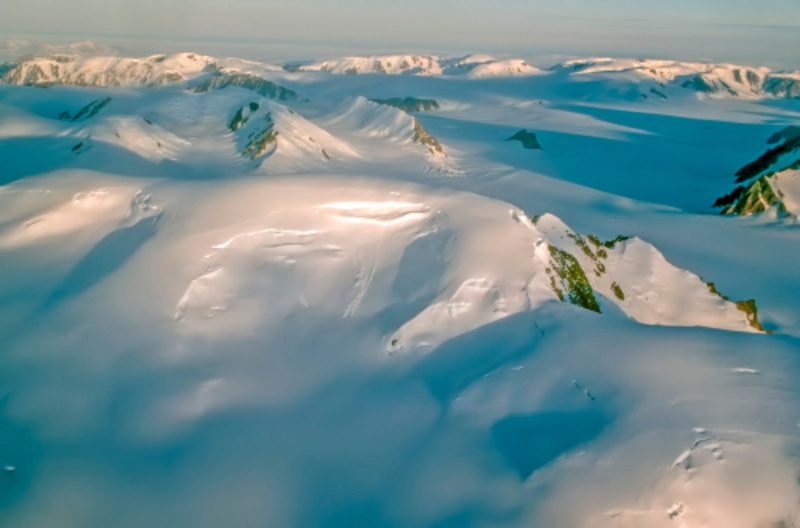
The melting Teardrop Glacier continues to reveal more of the region’s resilient flora, which researchers dated to somewhere between 400-600 years old in a report that was published in the Proceedings of the National Academy of Sciences.
Polynyas
A polynya is a phenomenon that occurs when the ocean currents push warm water towards the surface, melting the ice and creating giant holes. Some of these holes are so enormous that they could cover an entire small state in New England. Polynyas can stay open and grow in size once they appear, like this one in Antarctica that first popped up in 2017.
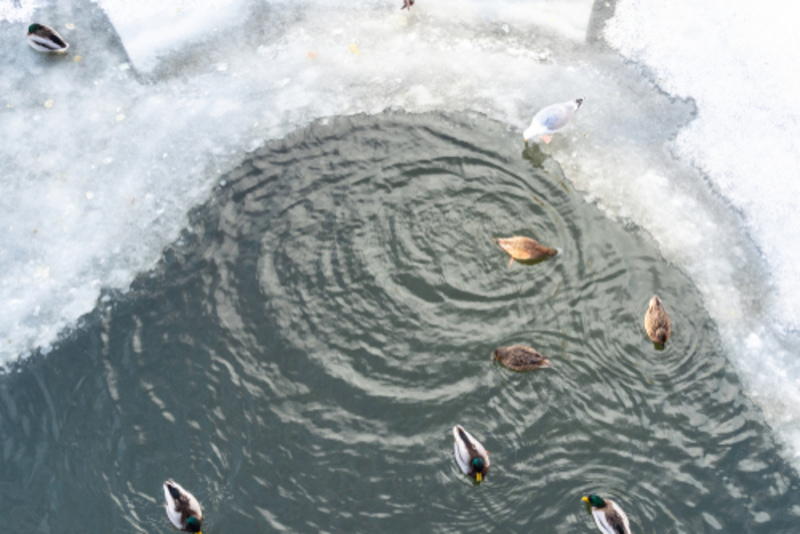
They tend to be circular or oval in shape, but that’s more of a guideline than a rule. The upside to these gaps between the ocean and ice is that they provide an entrance/exit for animals like seals, who live both in water and on land.
Sea Ice Continues to Grow
Even though most of the world’s most prominent scientists agree that global warming is very much a real thing and it is affecting the environment at an alarming rate, naysayers point to the fact that Antarctica’s sea ice only continues to expand as a method of debunking the science behind the phenomenon.
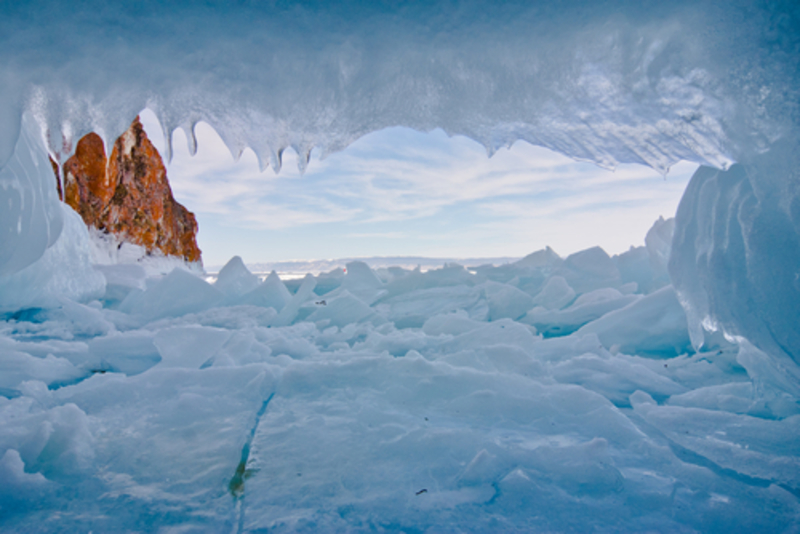
Climate change may melt the glaciers around the world, but so far it hasn’t stopped the sea from forming new ice. But even with the ice expansion in Antarctica, the melting glaciers continue to cause the sea levels to rise.
Flash Flood Frozen in Time
This is a great example of just how terrifying (and amazing) nature can truly be. Flash floods are crazy enough on their own, but just imagine how this could possibly even happen: a flash flood being frozen in time. Just think about the phenomena that had to occur in order for this to happen.
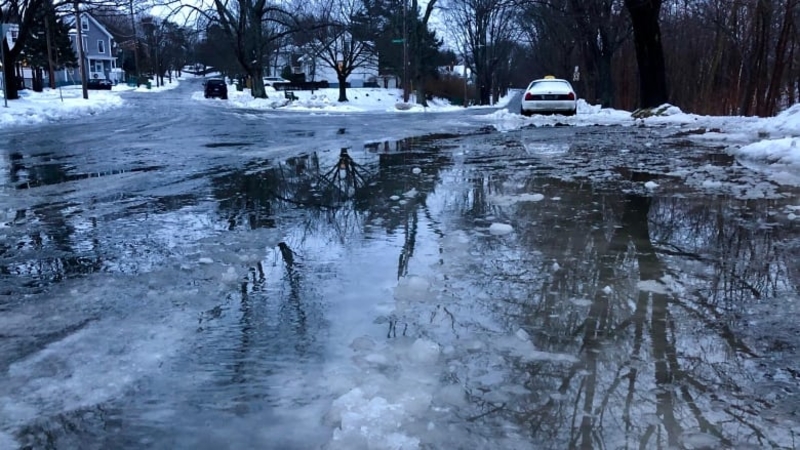
It’s probably a good thing that this took place in a rural area where there weren’t a lot of signs of human civilization, as this would have been a scary situation to be caught up in! A flash flood would have had to freeze very suddenly to get stuck at this angle.
A Tunic from the Iron Age
Norway’s melting glaciers have proven time and time again to produce some of the most interesting (and frequent) subglacial discoveries. Weapons and tools, including horseshoes and arrows, etc, continue to turn up in the area.
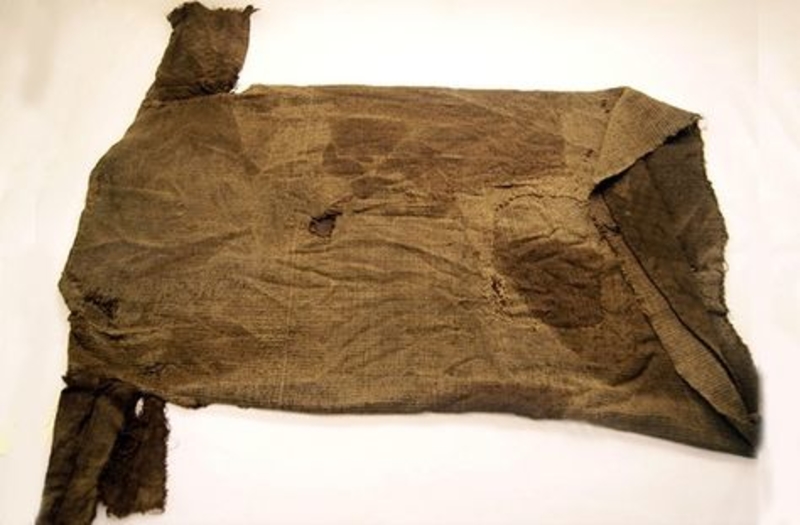
Scientists pulled a tunic from the ice and dated it back to somewhere between 250-350 A.D. The article of clothing was found buried in not only the ice, but also a few layers of horse poo, and crumpled up into a ball. But regardless of the condition that it was found in, it was still able to tell researches a lot about life during that time.
A Subglacial Forest
Imagine walking through an icy tundra one day and realizing that you were standing atop of an entire forest full of trees. That’s exactly what happened in the Mendenhall Glacier region of Alaska, where researchers discovered thousands of trees thought to be somewhere between 1,500 and 3,000 years old.
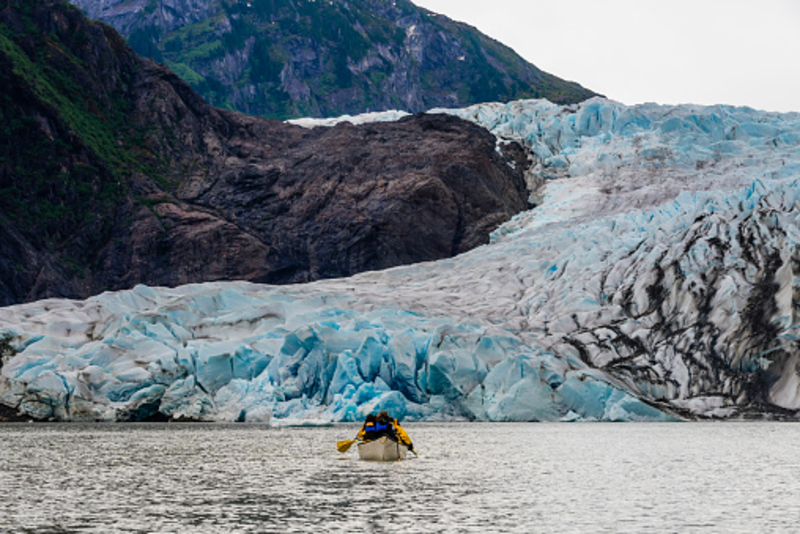
As more of the glacier melts, scientists are able to learn more about the trees that lived on Earth so long ago. Right now, they are simply looking at the tip of the iceberg…so to speak, which is the top of some of the long-frozen flora.
Frozen Ship(s)
Getting trapped on a ship at sea would be bad enough but being trapped on a ship at sea on Lake Michigan in the freezing cold would be even worse. That’s exactly what happened to the unfortunate crew of this ship that was stranded on the icy waters.
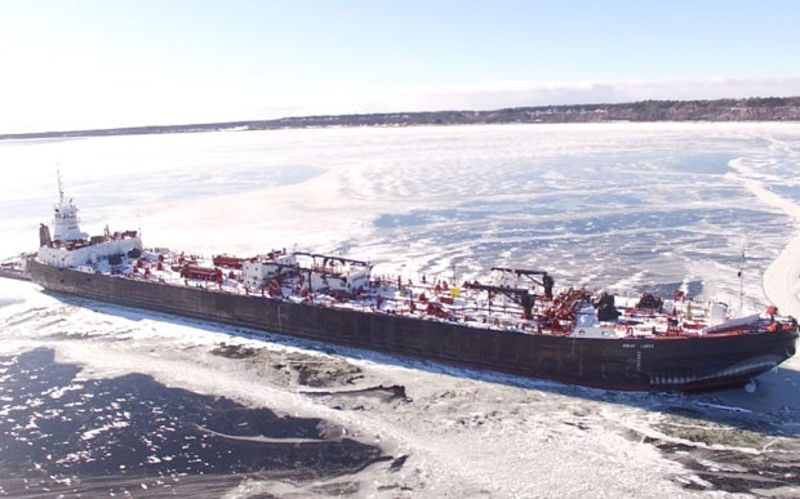
A drone flying by the are just happened to snap footage of it, alerting the public to its existence. But what happened to that ship isn’t all that uncommon. In fact, every year more than 2 dozen large ships go missing – either sunken or otherwise never heard from again, and that doesn’t include the near hundreds of smaller ships that contribute to the missing vehicles.
A Ton of Grasshoppers
Okay, when we say a ton, we actually mean tens of millions of grasshoppers. Apparently, these guys aren’t very smart, because there are millions of swarms trapped inside of glaciers in Montana alone. In fact, there are 3 glaciers in the area that are literally full of them, so much so that 2 were named Grasshopper Glacier and the other, Hopper Glacier.
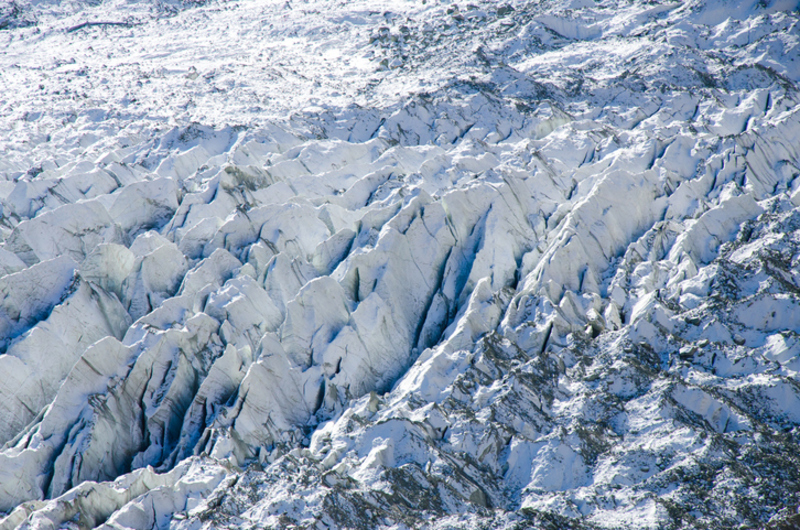
Researchers report that some of the insects are several million years old, while some swarms are a bit younger, possibly only a few thousand years old. Montana isn’t the only state where this add phenomenon occurs, as Wyoming has some glaciers full of grasshoppers of its own.
Selerikan Pony
The mummified remains of wooly mammoths and other Ice Age creatures have been found in various place popular for subglacial excavations, like Antarctica. But this next discovery wasn’t exactly made on purpose – or at least, it wasn’t what they set out to look for.
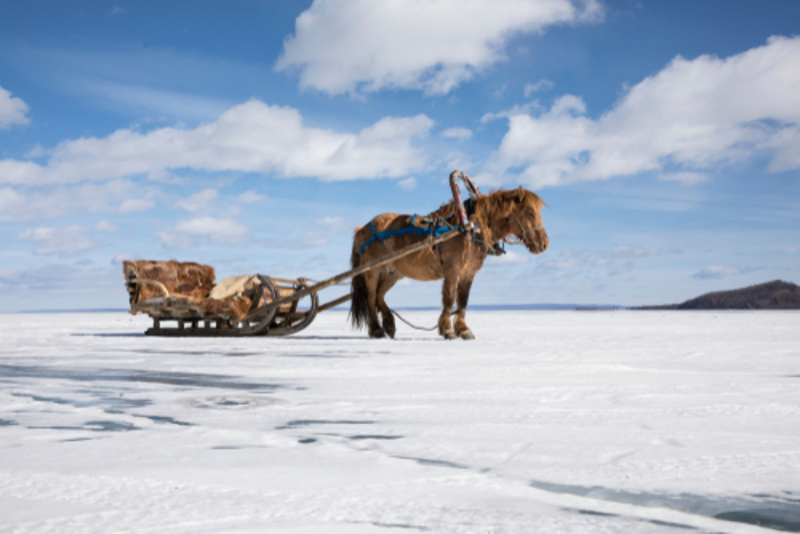
A group of gold miners searching for treasure in Russia stumbled upon the frozen corpse of a Przewalski Horse, an adorable wild type of pony that lived in the area nearly 40,000 years ago. The unfortunate animal had reportedly gotten stuck in a bog and died fairly quickly, possibly from freezing to death in the harsh winters of Yakutia.
Flower Buds
These ancient flower buds are yet another gift to modern-day researchers that were presented by an Ice Age squirrel who was simply trying to protect his stash of food by burying the seeds. Scientists discovered the bits of the ancient flower that they believe was the result of the squirrel burrowing and decided to try and bring them back to life.

They created the perfect conditions for the seeds to be able to grow in their lab and successfully revived this type of flower that hasn’t been around for tens of thousands of years.
Ancient Air
One of the most amazing things about the discoveries made in ice is how well everything is preserved over the course of thousands or millions of years. Scientists have been able to discover a lot about the world throughout history by studying these artifacts, or in this case, the gasses.

Through deep oil drilling, researchers discovered pockets of air full of different types of gas, like krypton. By testing the air, they’re able to determine the state of the atmosphere from the time the ice was formed – which is over 20,000 years ago, according to the reports.
Life-Threatening Diseases
While the Pithovirus may not affect humans, the virus that they dug up from the permafrost in Russia in the early 90’s most definitely can. Researchers found bodies covered in markings that resembled the effects of Smallpox, and it’s no wonder, as that area did have an epidemic of the deadly disease in the 1890’s.

And it’s not just viruses that can survive in the icy cold tundra, it’s bacteria, too, some as old as nearly 10 million years. Scientists worry that as the ice continues to melt away, more life-threatening diseases will emerge from beneath.
Zombie Pathogens
Ice acts as a protective seal for deadly viruses and bacteria, that can preserve these pathogens for millions of years until it melts and unleashes an outbreak on the unsuspecting human population that inhabits the area. This kind of disease is known as a “zombie” disease, due to the fact it goes into a deep sleep for ages until it is awakened only to kill.

Often times before the advancements in society, bodies of the dead who died from epidemics were simply buried in the woods. Now, the melting permafrost continues to expose these bodies and reintroduce these “zombie” pathogens into the environment.
Anthrax
And speaking of scary things that have the ability to wipe out entire populations, an Anthrax outbreak in a remote area of Siberia caused villagers quite the scare. Although numerous people were infected, only one person was killed, but the virus also spread to more than 2,000 of the area’s reindeer.

Researchers determined that the cause of the outbreak was the melting permafrost, which had infected reindeer carcasses buried beneath it from decades ago. The melting ice not only caused the spores to return the air but also got into the town’s groundwater by seeping into the soil.
Dozens of Seals
In Alaska, researchers stumbled upon an ancient burial site, full of dozens of decaying seals. The bodies were found in the area of an old hunting cabin and were reportedly quickly decaying along with the melting ice.
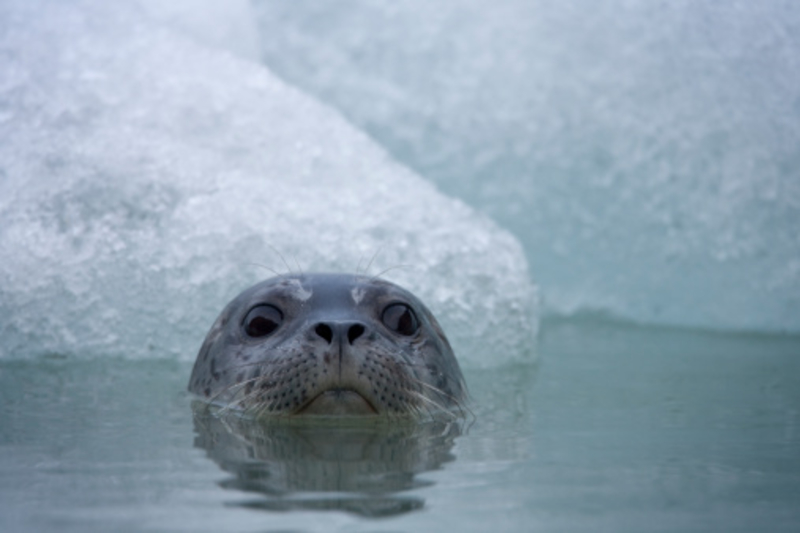
One person on the team who found the seals said that their organs were “seeping out” of the corpses and that the area smelled like rotting fish for a good half-mile radius. But is that any surprise, considering they dated the bodies to over 70 years old? The area was cleaned up and all of the remains were relocated (to somewhere less…. blatant.)
A Secret Military Base
Camp Century is an old military base in Greenland, that is buried more than 20 feet below the icy ground. The site was built as a nuclear testing facility and to house U.S army troops back in the 1960s but was abandoned in 1967.
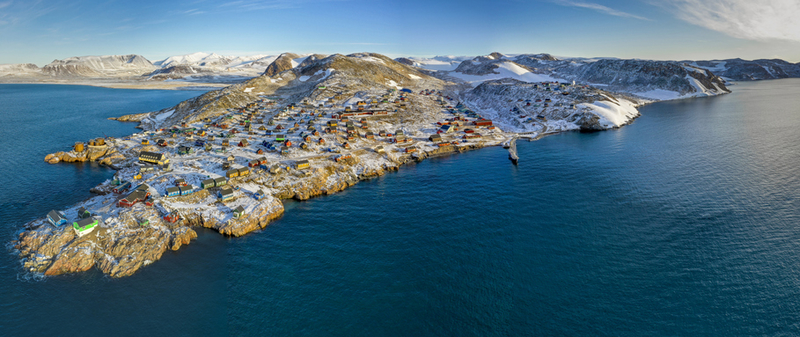
The complex is located underground and consists of a series of interconnecting tunnels. The abandonment of the facility may have had something to do with the fact that it was built without the direct permission of the government in Denmark. Camp Century consisted of several housing units, a movie theatre, a store, and a hospital.
Subglacial Nuclear Reactor
Attached to Camp Century was the world’s very first mobile nuclear generator. The entire operation was so elaborate that it ended up being dubbed the “city under the ice.” But as you can imagine, the local government wasn’t very happy about the U.S messing with nuclear energy on their turf.

In those days, global warming hadn’t yet been discovered and U.S officials who were in charge of the project that for sure that they would never be found out. The reactor, along with Camp Century, were just some pieces of a much larger (secret) military operation known as Project Iceworm.
Petrified Fossils
Researchers in Antarctica spent an entire year scaling the icy mountains looking for clues to something they knew existed in the area long before all of the ice-covered the continent: forests. The entirety of the land that today is a barren tundra used to be filled with luscious green life.
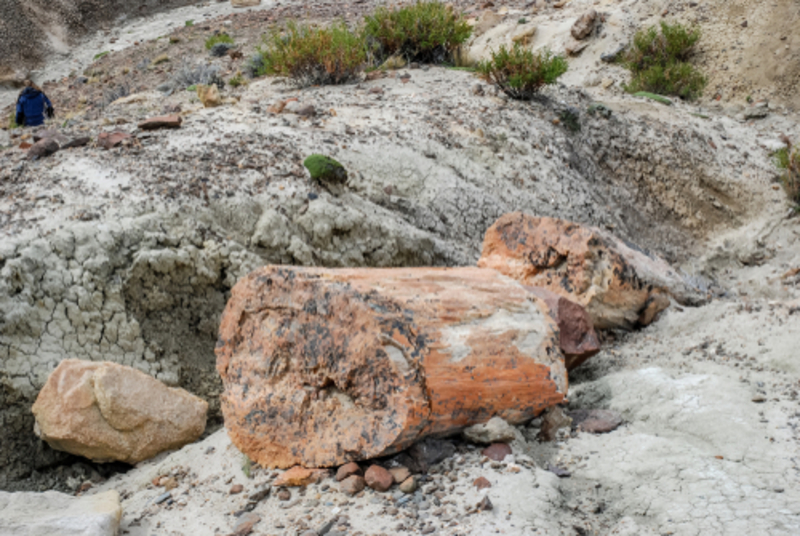
After the trip, they had 13 fossils from some of the ancient trees – dated back to over 250 million years ago. One scientist who went along on the trip said that the samples are “some of the best-preserved” of their kind in the entire world.
Living Fossil
The fossils found in 2017 in Antarctica were petrified, which means the plants had basically turned to stone from the inside out. They were able to teach scientists a lot, but they weren’t able to revive the plants since they were long dead. But this fossil of the Wollemi Pine – a tree that was alive hundreds of millions of years ago when the dinosaurs roamed the Earth – is alive.

One of the lead researchers on the team handling the discovery has called it the “equivalent of finding a living dinosaur.”
Prehistoric Plant Life
Although most of the flora from hundreds of millions of years ago eventually died off, scientists have been able to determine that while it was here – it fought the good fight. Conditions in those days often meant that these plants would spend a consecutive 5 months in the sun and another with consistent sunlight.
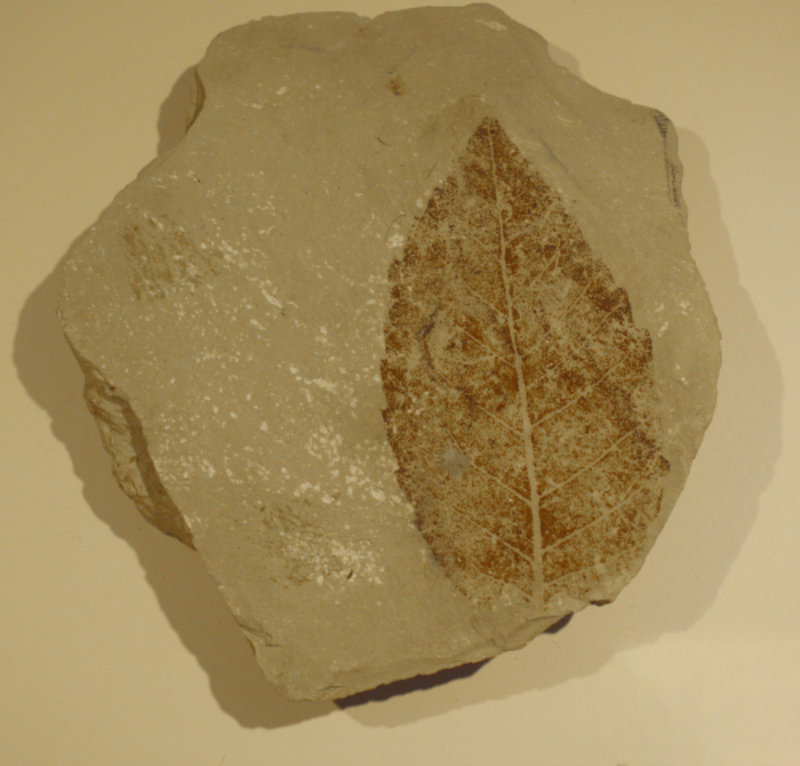
They still aren’t entirely sure how they were able to survive it, just that they did. Today, plants take a much longer time to transition between the seasons, whereas millions of years ago they could seemingly do so overnight!
Cave Lions
Another unfortunate discovery of some adorable Ice Age big kitties that met their untimely doom at the hands of Mother Nature was made when the bodies of 2 10,000 year old cave lions were found in Siberia.
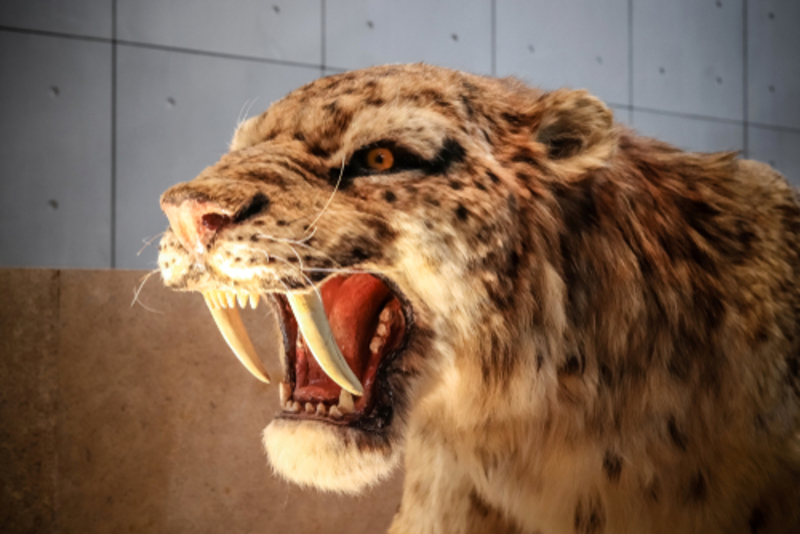
Eurasian cave lions are said to be one of the largest species of lions to have ever existed. Parts of these animals have been found in the area before, mainly bones, but this was the first time that their full, well-preserved carcasses had been discovered. The bodies were reportedly in such good condition that they still had blood in their veins and the meat was fresh.
A Window to the Past
From subglacial lakes, to polynyas, to petrified fossils, each of the discoveries made from beneath the thick layers of permafrost that have covered entire regions of our modern world can tell scientists everything they need to know about the ever-changing climate, and the state of the environment throughout the different periods of history.
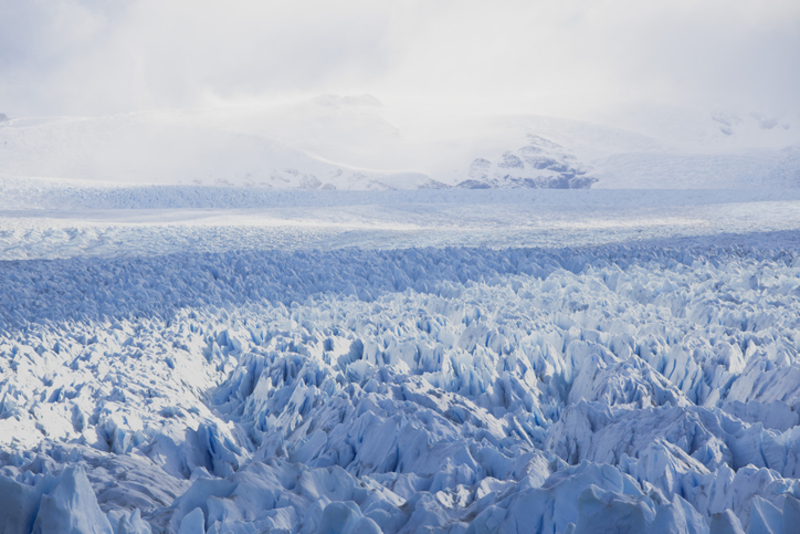
In some cases, they’ve been able to get their hands on the microorganisms found within fossils and other items recovered to dig more into the makeup of the environment over time. And other times, they have even been able to turn those windows into doors by bringing some of the sleeping flora back to life!

What Blood Types Do Mosquitoes Prefer?

Do You Always Want To Sleep In? Here are Some Things Your Body Could Be Telling You

Here are Some Incredible Science Accounts on Instagram You Can Follow to Celebrate Science

Eating the Same Breakfast Every Day Might Benefit You

Real Life Optical Illusions Your Brain Will Trip Out On

Everyday Things That Have Hidden Uses

Ancient Egypt’s Most Interesting Discoveries We Know about the Pyramids

Cringe Worthy Car Trends That Have Got To Go

Check Out These Creative Ways Aluminum Foil Can Improve Your Life

The Most Bizarre Weapons Used by U.S. Navy Units






















